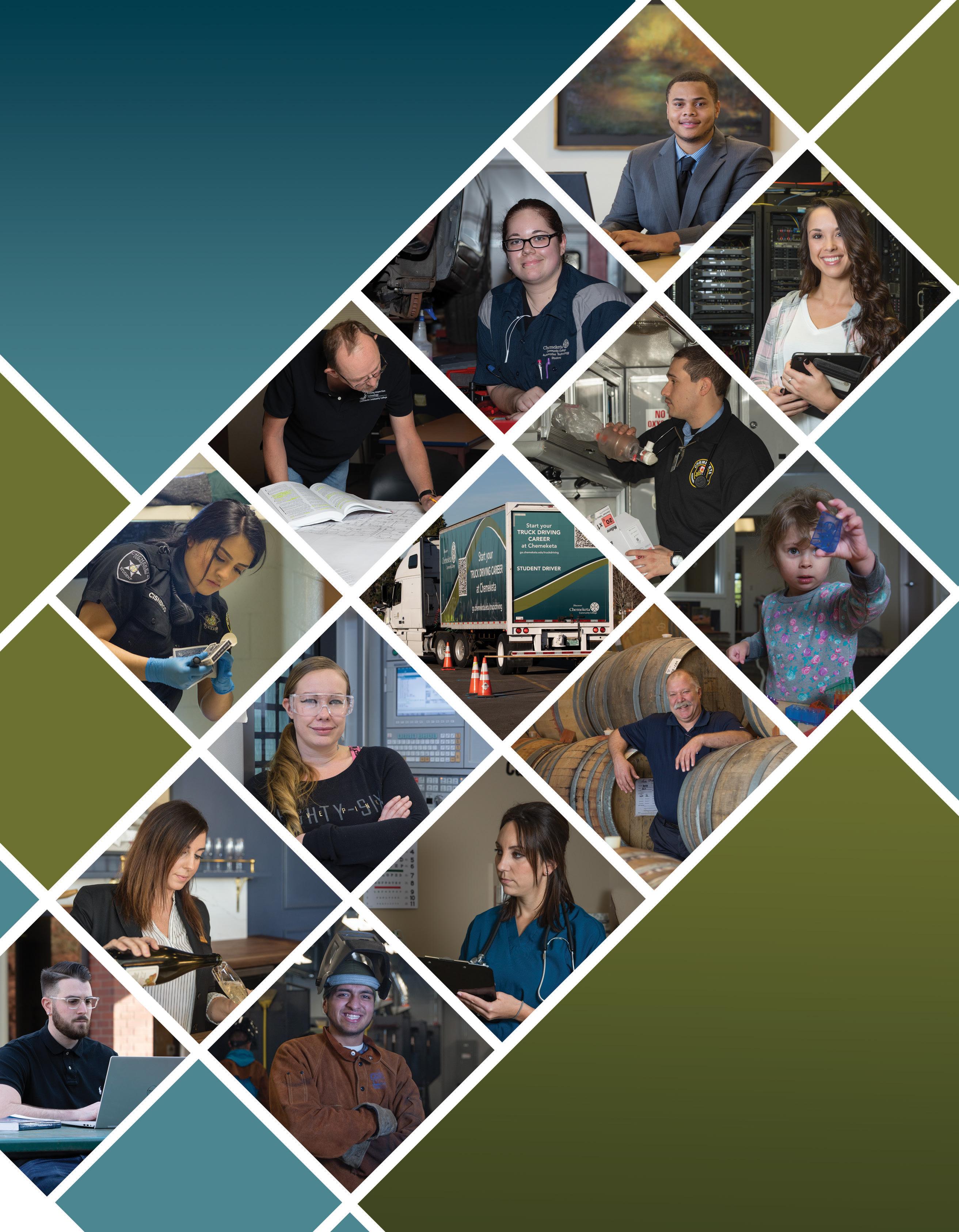Economic Development in Oregon’s Mid-Willamette Valley Winter 2022




Aldrich Advisors 17
Bank of the Pacific 14
Cascade Capital 21
Cascade Collections 1
Chemeketa Community College Back Cover Cherriots 19
Citizens Bank 3
City of Salem 21
Coldwell Banker Commercial 23
Covanta Marion 12 Datavision 19
Dalke Construction Co. 19 EnergyTrust of Oregon 15
Freres Lumber 7 Hagan Hamilton 20
Grand Hotel of Salem 25
Green Acres Landscape 4 Huggins Insurance
MAPS Credit Union
Multi/Tech Engineering Services

Nathan Good Architects
Oregon Credit Union
Powell Banz Valuation
Power Fleet Commercial Sales
Rich Duncan Construction ............................................ 22
Salem Convention Center.................Inside Front Cover
Santiam Hospital
Select Impressions
Inside Back Cover
Sherman Sherman Johnnie & Hoyt, LLP .................... 25
SVN Commercial Advisors............................................. 21
SwiftCare Medical Clinic
White Oak Construction
Mike Keane
Shareholder and Managing Officer, Garrett Hemann Robertson
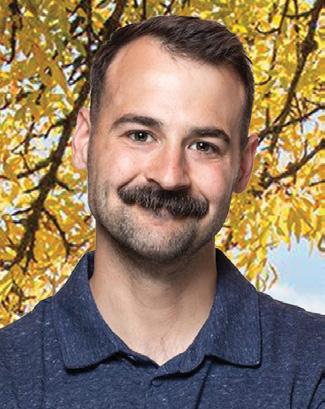
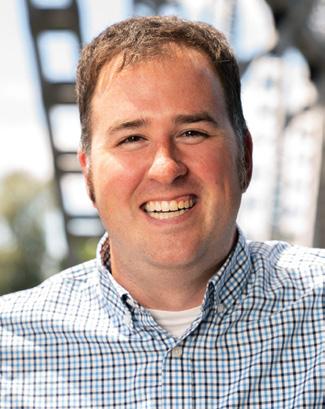
Vice-Chair
Kate Schwarzler
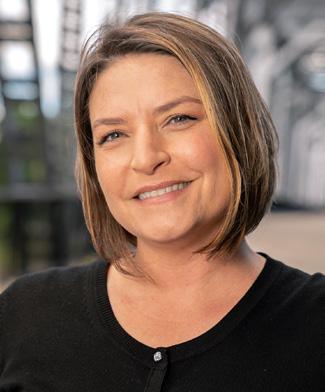
Owner, Indy Commons
Treasurer
Ryan Allbritton
SVP, Chief Banking Officer, Willamette Valley Bank
Past Chair
Michael Fowler CEO, CabDoor
Curt Arthur
Managing Director, SVN Commercial Advisors
Ricardo Baez
President, Don Pancho
Authentic Mexican Foods, Inc.
Roxanne Beltz City Councilor, City of Monmouth
Chuck Bennett Mayor, City of Salem
Becky Berger
Owner and CEO, Berger International
Lindsay Berschauer County Commissioner, Yamhill County
Alan Blood General Manager, Garmin AT, Inc.
David Briggs
Trial Lawyer, Partner, Saalfeld Griggs PC
Patricia Callihan Bowman
Owner/Career Coach, Express Employment Professionals
Tom Christensen CFO, Oregon Fruit Products
Cathy Clark Mayor, City of Keizer
Richard Day
Owner/Manager, Advantage Holdings LLC
Brent DeHart
President, Salem Aviation
Rich Duncan
President, Rich Duncan Construction, Inc.

Tony Eaquinto
Southern Regional Manager, Portland General Electric
Juli Foscoli
Secretary / Treasurer, South Town Glass
Theresa Haskins
Senior Business Development Manager, Portland General Electric
Stephen Heckert
Farm Operations Specialist, Crosby Hops
Steve Horning
VP, Business Relationship Manager, People's Bank
Jessica Howard
President/CEO, Chemeketa Community College
Daryl Knox
CPA, Partner, Aldrich Group
Timothy Murphy
VP of Business Operations, DCI
Scott Snyder
General Manager, The Grand Hotel in Salem
Keith Stahley City Manager, City of Salem
Colm Willis
County Commissioner, Marion County Board of Commissioners
Mark Hoyt
Partner, Sherman Sherman Johnnie & Hoyt, LLP
Jamie Johnk
Economic Development Director, City of Woodburn
Shane Kelley
Business Banking Relationship Manager, Key Bank
Adam Kohler
Regional Business Manager, Pacific Power
Jennifer Larsen Morrow
President, Creative Company, Inc.
Rod Lucas
Owner, Turner Lumber, Inc.
Kim Parker-Llerenas
Executive Director, Willamette Workforce Partnership
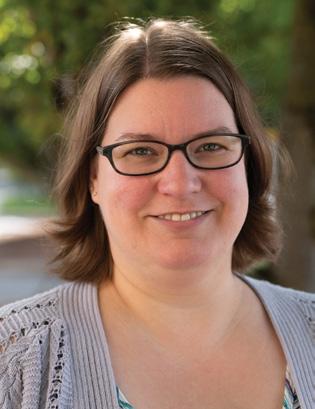
James Parr
Chief Financial Officer, Salem Health
Craig Pope County Commissioner, Polk County
Jim Rasmussen
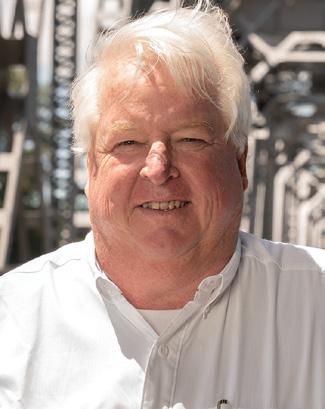
President/CEO, Modern Building Systems
Mark Raum
VP, Commercial Banking Officer, Columbia Bank
David Rheinholdt
Board President, Latino Business Alliance
Samantha Ridderbusch
Director, Government & Regulatory Affairs, Comcast
Rick Rogers
Mayor, City of Newberg
Tony Schacher
General Manager, Salem Electric
Liz Schaecher
Program Coordinator, Oregon Aglink
Dan Ulven
President, The Ulven Companies
Michael Wynschenk
CEO, Hunter Communications
626 High Street NE, Suite 200 • Salem, OR 97301 503-588-6225 • info@sedcor.com • www.sedcor.com
Erik
President 503-837-1800 eandersson@sedcor.com
Director of Operations
503-588-6225 jkistler@sedcor.com
Business Retention & Expansion Manager –Marion County 503-837-1804 nharville@sedcor.com
Alex Paraskevas
Economic Development Manager – Polk County Rural Innovation Catalyst 503-837-1803 alexp@sedcor.com
Abisha Stone
Economic Development Manager – Yamhill County 503-507-4175 astone@sedcor.com
Michael Miller
Marketing and Communications Coordinator 503-588-6225 mmiller@sedcor.com
Sometimes a spot on the map will become so closely associated with a specific industry, the city name and the industry become synonymous. Washington DC is politics. Hollywood is entertainment. And Palo Alto is tech. Closer to home, the Willamette Valley is known the world over as a wine industry center. And depending on who you’re talking to, it might also be synonymous with Willamette hops or even grass seed.
But when you see the word “innovation,” the Willamette Valley is not the first place that comes to mind. Maybe Palo Alto and the cities of Silicon Valley. Maybe the Research Triangle cities in North Carolina. Unfortunately, many of us have trouble separating innovative thinking from urban centers. Often it seems that if you have an innovative idea or product, you need to go to a big city to bring it to market. Just like aspiring actors buy a one-way Greyhound ticket to Hollywood.
Erik Andersson SEDCOR President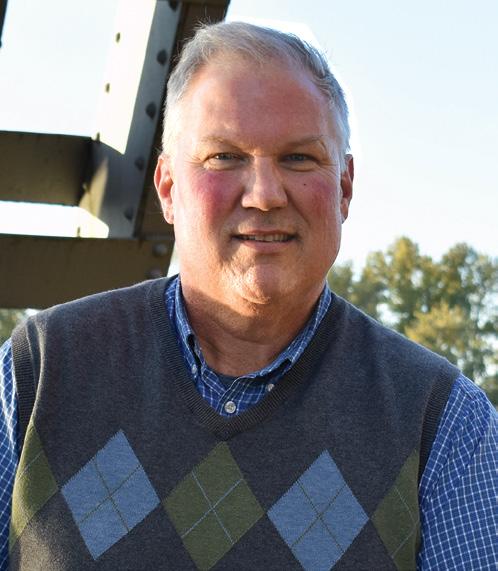
In this issue, we want help break us of this “innovation = urban” assumption and ask all our readers a simple question. What if the most important technological advances of the next decade will come from places you least expect?
From the experience we’ve gained though SEDCOR’s Northwest Ag Innovation Hub initiative, we know vital innovations are being dreamt up, created, perfected, and launched from the bucolic backroads that connect our region’s communities. No longer do urban centers have a claim to all things new and exciting.
Innovation has gone rural.
In our feature article, we explore this phenomenon and try to find why smaller towns have and will continue to become fertile homes for futuristic thinking. Plus, we ask local employers what they are doing now to prepare for the oncoming robotics revolution and what techsavvy workers can do to find good jobs outside of traditional tech hubs.
For our interview, I’m excited to introduce you to two gentlemen building a smart, cost-effective, and earth-friendly bottle return-andreuse system, starting with Oregon’s wine industry. Revino (Re-vino, get it?!) has seen the potential to strengthen our local beverage supply chain and is doing something about it.
In our Region of Innovation section, we feature Domaine Willamette (the home of Oregon’s first exclusive sparkling wine facility) and Solid Carbon, a group of Valley entrepreneurs who has successfully created the world’s first carbon-neutral concrete mixture.
Even though the robots haven’t totally taken over, our region’s manufacturing sector is far more technologically advanced than many of us realize. For a lot of us, the technology can be difficult to spot. We hope this issue shines a much-deserved light on the innovative thinkers, builders, growers, and producers who are using (or even inventing) the tools that will take our region’s most unique and vital industries into the future.

is pleased to announce and welcome new Associate Advisor Elizabeth Infante. Elizabeth will be working in the Salem SVN office specializing in commercial sales, leasing, and tenant representation.
“To have this dynamic lady join our team who is both bilingual and who is going to focus on retail-related properties is exciting. Her drive to obtain both her bachelor’s and her MBA while working full-time speaks volumes about her tenacity to succeed,” said
“I came to SVN knowing I would be joining a strong, powerful team who would help me grow professionally. I did not expect to gain a team that felt like family, a team that would challenge me to be better. A wise person once told me ʻPeople come to SVN for the tools, but stay because of the culture.ʼ I could not have said it better.” - Elizabeth
For details about any commercial needs, contact Elizabeth at 503.569.9043 or email her at Elizabeth.infante@svn.com.
More than $16 million of federal funds are on their way to University of Oregon and $8 million to Oregon State University researchers after the Oregon Mass Timber Coalition was named a grant recipient by the historic Build Back Better Regional Challenge.
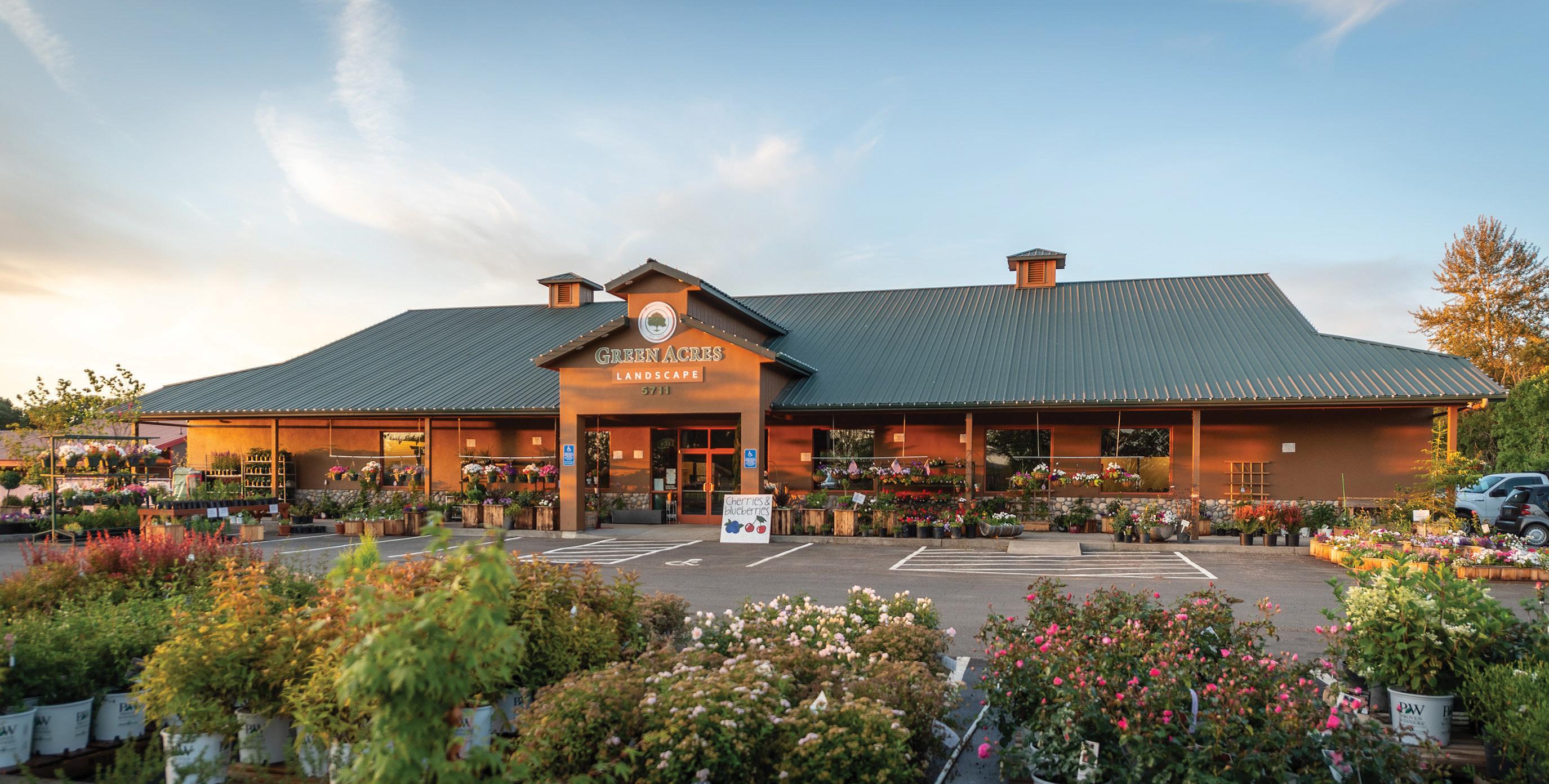
The U.S. Department of Commerce’s Economic Development Administration announced today that the coalition was awarded a total of $41.4 million, with $24.6 million going to the TallWood Design Institute, a collaboration between the UO and OSU to support Oregon’s mass timber industry.
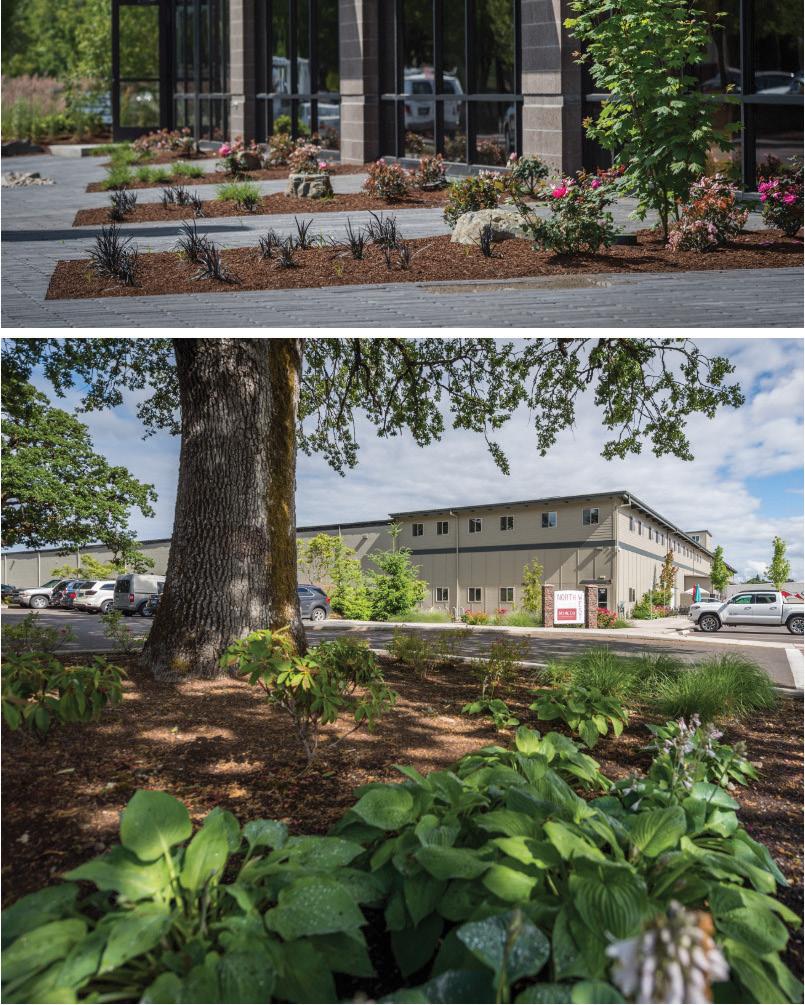
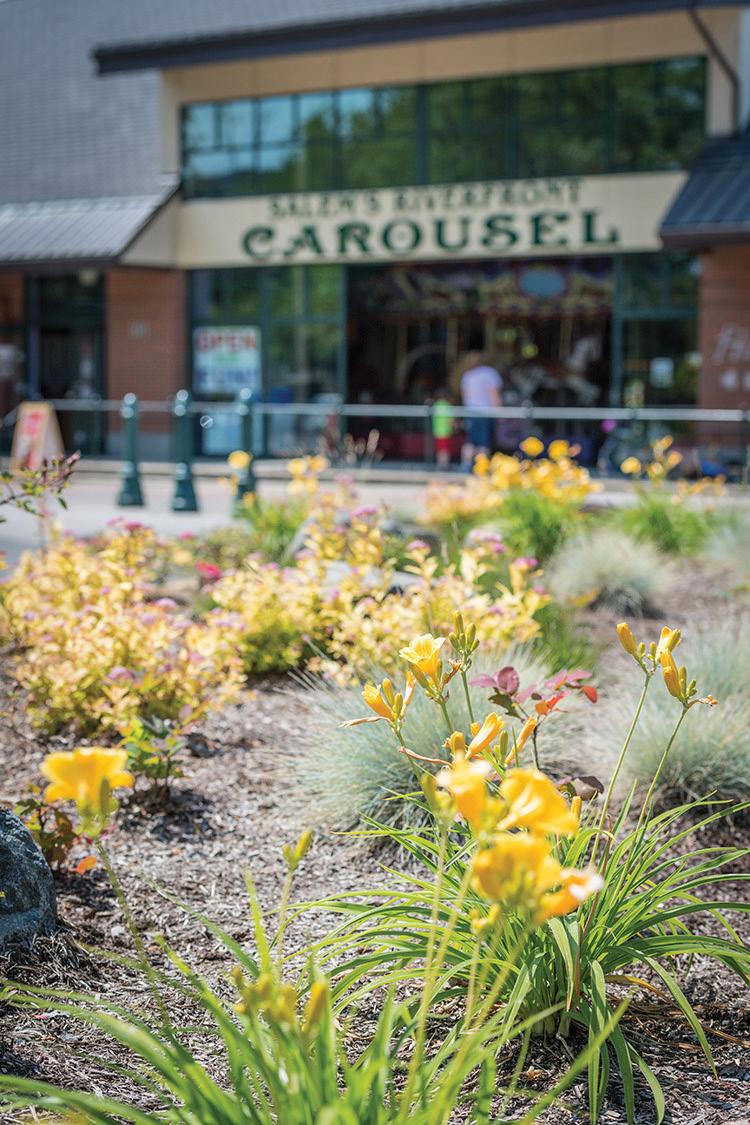
Of the funds, $14.6 million will go toward the Oregon Acoustic Research Laboratory and $2.0 million is destined for affordable housing prototyping using mass timber: an application that uses solid wood panels that are prefabricated using digital workflows. Both programs are part of the College of Design and contribute to the institute.
“The UO and OSU, through the TallWood Design Institute, have been essential to the development of the modern mass timber industry in Oregon through our research and development,” said UO architecture professor Judith Sheine, design director for the institute. “Combined with the funding that will support smart forestry research, a new fire testing facility, and modular mass timber housing testing at OSU, and UO’s acoustic research lab and prototypes for affordable housing and retrofits, we will continue to advance our R&D work into the future to provide benefits for Oregonians.”
The Oregon Mass Timber Coalition, in addition to the UO and OSU, includes the Port of Portland, Business Oregon, the Oregon Department of Land Conservation and Development and the Oregon Department of Forestry.

“This grant will provide a tremendous lift to the TallWood Design Institute, which already leverages the expertise and collaboration of researchers at the University of Oregon and Oregon State University,” said Patrick Phillips, interim president of the UO. “It will also benefit the entire state of Oregon, driving innovation and helping to increase our housing supply in a sustainable way.”
Source: University of Oregon
The City of Salem, in partnership with Portland General Electric, has received a $1 million grant from the Oregon Department of Energy through the Community Renewable Energy Grant Program to construct Oregon’s first-ever community microgrid in Southeast Salem.
“I am really excited to see such an innovative renewable energy project of this kind move forward here in Salem. It is this kind of collaborative and forward-thinking work that demonstrates the City’s commitment to climate resiliency,” said Salem Mayor Chuck Bennett.
A microgrid is a local, small-scale electric grid comprised of one or more distributed energy resources (e.g. generator or solar panels). It is connected to, and operates in conjunction with, the main grid, and in the event of a power outage, it can isolate itself and operate independently.
What makes Salem’s new community microgrid unique is it is the first microgrid connected to PGE’s distribution system and can serve multiple customers independently in the event of a power outage. It will be able to supply emergency power to the City’s Public Works Building, six apartment buildings with 96 units, 34 homes, four government buildings and one business.
Also, unique to Salem’s community microgrid is the distributed energy resources that make up the microgrid – a PGE-owned battery and a city-owned solar installation – are not physically co-located.

“This is an exciting project that combines different renewable resources to add resiliency to the community and electric grid,” said Larry Bekkedahl, senior vice president of Advanced Energy Delivery at PGE. “It’s amazing to see what can happen when we collaborate with our customers and communities to shape the future of the grid.”
The new community microgrid will collect excess solar power from the Public Works Building and store it at the Salem Smart Power Center, ensuring the city has renewable energy on-hand for emergency use. The award also provides funding to increase the power storage at PGE’s Salem Smart Power Center, bolstering resiliency and the use of clean, renewable energy in the neighborhood.
Other microgrids that PGE has built serve the Oregon Military Department’s Anderson Readiness Center and the City of Beaverton’s Public Safety Center.
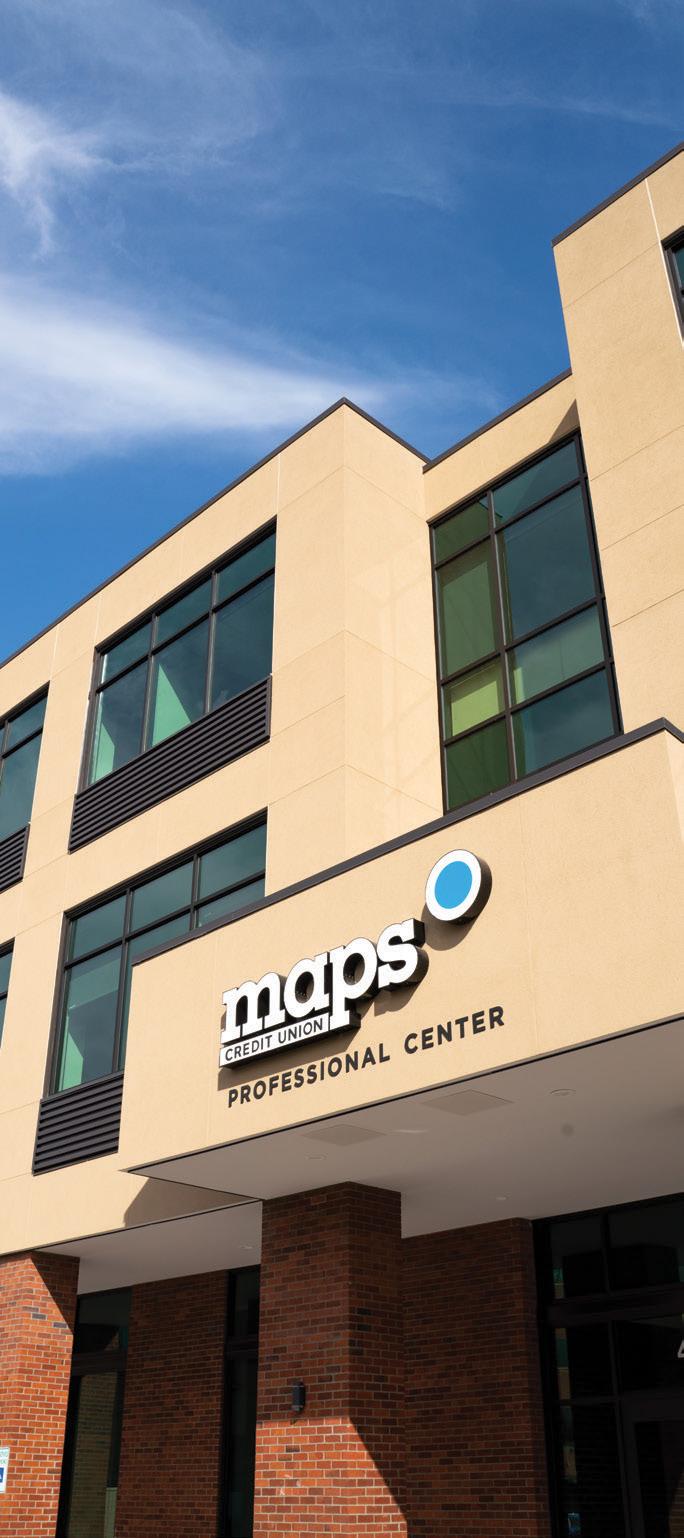
This project addresses multiple action items in Salem’s recently completed Climate Action Plan for increased resilience in the face of climate change and extreme weather events. The City’s Climate Action Plan was finalized and accepted by City Council in February 2022.

With over 25 years of experience building, installing, and repairing technical systems for friends, family, and resolving issues for commercial customers, TerryByte Computer Repair was created.
The main objective is to provide individualized, quality customer service for those in and around Keizer and Salem Oregon, while utilizing the years of experience that have developed in the computer industry.
TerryByte Computer Repair is an independent computer support business that specializes in personalized service for small business and residential technology users. Our goal is to satisfy every customer every time.
www.terrybytecomputerrepair.com
BRAND is a small business focused on providing our clients with exceptional deliverables. We offer a variety of services to assist in launching your development projects, keep them on track, and secure necessary entitlements to begin construction.
BRAND has built relationships with industry leaders. We can put our clients in contact with top Professional Land Surveyors, Civil Engineers, Geotechnical Engineers, Environmental Planners, Architects, and Construction Contractors. Because BRAND has built relationships with other trades, our clients have complete project teams.
www.brandlanduse.com
While we were raised in vastly different environments, Joe in the dry heat of the Nevada desert and Karen in the rainy Willamette Valley, we both grew up with a deep appreciation and respect for Mother Earth. In the late 2000s, established in our careers and living in Salem, we found ourselves yearning for the rural life of our childhoods and dreaming of land that could be passed on to our grandchildren. Together, we found a perfect hill with stunning views, an oak wood, and a two-acre pond. There was a catch, however: The land’s thin, sedimentary soils wouldn’t allow for any crops to grow — except grapes. And so, with the purchase of this special hill, we restored the land and planted a vineyard, demonstrating our love for the place, each other, and our family by farming the land sustainably and preserving its diverse natural habitat.
www.andantevineyard.com


For over 30 years, Founder and CEO of Jackman Wealth Management, Rob Jackman, has helped his clients create and manage incomes for life.
Rob's experience through two severe recessions has given him his greatest strength: the ability to educate his clients in financial best practices.
www.jackmanwealthmanagement.com

Premier NW Insurance is a local, family owned company founded in 1972. We have a rare commitment to customer service. We provide the right insurance needs to our customers – no more – no less.

We deliver insurance plans tailored to the specific needs of each client and utilize our strong relationship with our insurance carriers. Our agency is large enough to offer a wide variety of products, with excellent pricing, yet small enough to give the personal attention that individuals and businesses appreciate and need.
We become an extension of your company allowing you more time to focus on your core business. Premier NW Insurance is a full service agency, offering a wide spectrum of insurance, risk management and benefits consulting. We have a knowledgeable and resourceful staff available to assist your every need. Premier NW Insurance is a local agency focused on relationships with not only our clients but with a variety of insurance carriers allowing us to provide top-notch customer service.
www.premiernw.net

In the summer of 2022, the State of Oregon published their 10-Year Innovation Plan and with it the introduction of regional innovation hubs, including one in the Willamette Valley. Through the plan, the State’s express goal is to “support Oregon’s recovery from recent events and build a resilient economy and grow our capacity to foster the formation of innovation-based businesses and support them as they scale-up and generate new, high-wage jobs.”
The statewide plan recognizes and adds resources to support a reality we at SEDCOR have known for a long time: innovation has a natural home in rural communities. And although most

people only associate “innovation” with “urban” and “tech industry” with “social media”, the fact is that some of the most highly innovative projects are taking root in decidedly non-urban places and the most important tech firms have nothing to do with TikTok or Meta.
Based on our experience in regional economic development, we understand it is within the most unassuming spaces where the most unique and innovative products are being built and the most creative practices are being perfected.
To borrow a phrase from psychologist Carl Jung, the things you need to see most are in the places you’re least likely to look.
Technological advancement does not have a permanent address in urban centers. High-tech firms and innovative problem solvers are discovering the appeal of rural communities at the same time rural communities are discovering the usefulness of adopting emerging technologies.
Recently, we have seen this truism expand beyond commercial business parks and farm buildings. Quiet and quaint communities are increasingly becoming more attractive to hightech firms as a base of operations.
Just this year, Ascentec Engineering was handed the keys to the former Tyco building in Dallas, Oregon. Ascentec was founded in 2001 and designs, machines, and assembles advanced parts for spaceflight, aviation, and national defense, as well as processing tools for semi-conductor and circuit board manufacturers.
“For businesses like Ascentec, a community like Dallas makes perfect sense,” says Charlie Mitchell, Economic & Community Development Director for the City of Dallas. “We have the industrial space. Plus, we are a highly livable community and are close to the infrastructure they need to ship their products.”
According to Mitchell, Ascentec plans to keep hiring as local as possible, even hosting a recent open house and job fair to try and fill up to 100 open positions. “During our initial conversations, the leadership team at Ascentec told us that one of their best employees was hired directly from being a sandwich artist at Subway,” recalls Mitchell. “As long as potential employees have the right attitude and temperament, nearly anyone can be trained up on their machinery and systems. And these are very good jobs.”
Mitchell believes as more high-tech firms find new homes in rural communities, the educational infrastructure will adapt to fill the pipeline and give students the right foundational knowledge to build successful careers at those firms. Plus, they will be able to stay and invest in their local communities instead of commuting or relocating to urban centers.
“People prefer to work close to where they live,” say Mitchell. “This proximity gives them the opportunity to invest, volunteer, and add value to the place they care about and care for. From the City’s point of view, we understand the multiplier effect of dollars staying local and all the non-traded sector businesses and jobs even one major employer supports.”
In Sometimes a Great Notion, the quintessentially Oregon novel by Ken Kesey, one of the primary plots is driven by the introduction of new technology to a legacy industry that causes an entire town to go on strike, causing massive economic damage. In the case of the novel’s fictional coastal logging town of Wakonda, this destructive new technology is the chainsaw. The conflict works because it touches on a deeply human fear of our economic value being replaced by hyperproductive machines.
In the reality of today’s Willamette Valley agricultural industries, new tech is improving work and creating new jobs instead of making them disappear.
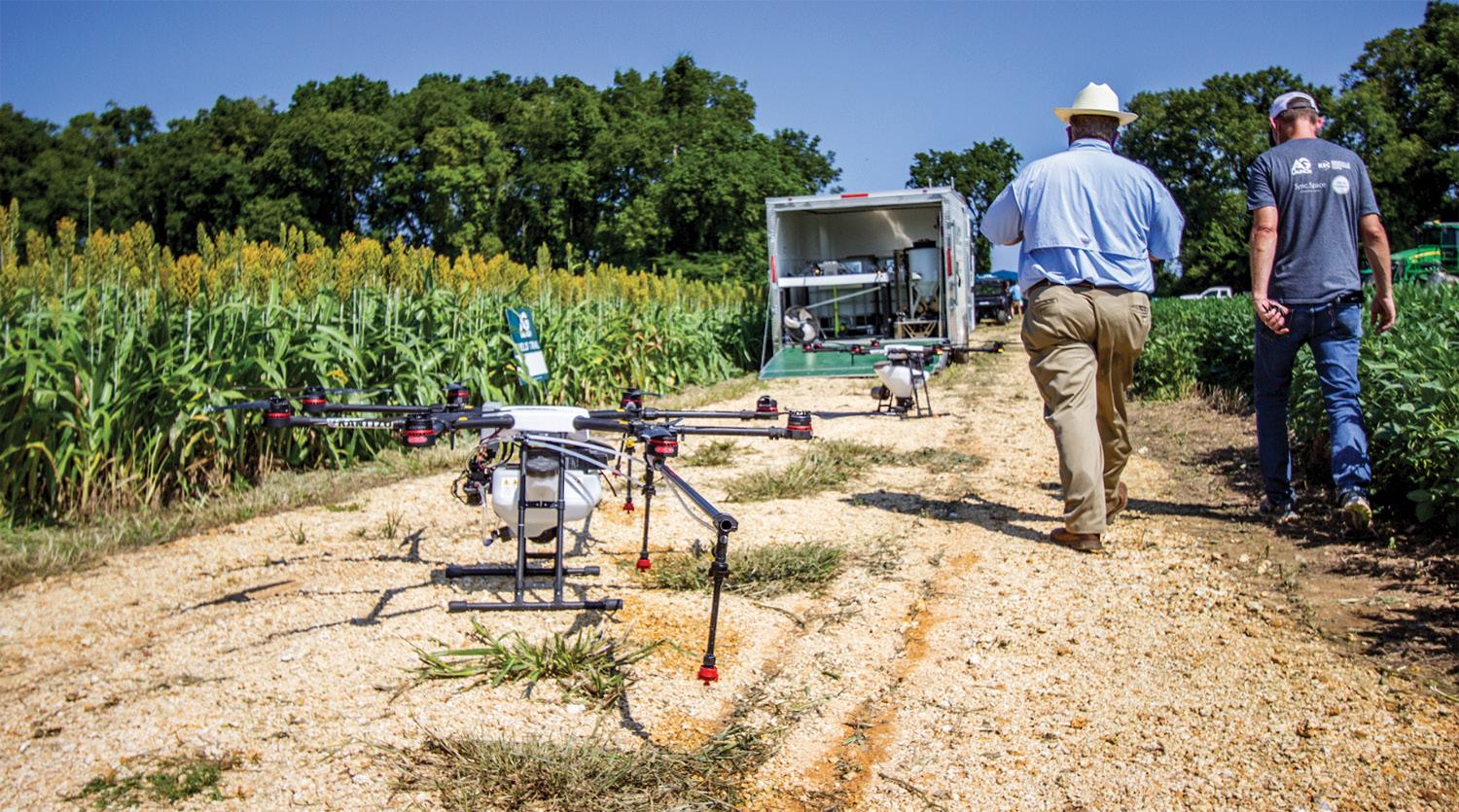
For instance, when Marion Ag Services began installing automated systems, they actually added jobs due to increased
productivity. Among growers, food processors, and other businesses in the Willamette Valley Ag Supply Chain, tools like robotic palletizing systems allow backbreaking manual tasks to be handled by machines which creates employee retention (uninjured staff tend to stay longer) on top of the increased efficiency.
Miles Oliveira, owner of Buildable Custom Software in McMinnville, believes quality control and data collection are the most exciting uses for robotics and machine learning. “You can teach a machine-learning system to identify good from bad from better products in a line. The more nuts, wine grapes, seeds, or other products you show the system, the better it will become at seeing, identifying, and sorting. And unlike a person, the system will never get bored or tired. If it could express emotion, it would smile at the chance to watch filberts go by for hours.”
As the husband of a farmer, Oliveira knows many growers find success by making big decisions with limited information. He believes they can make even better decisions with more data. “What if the right data could be collected, compiled, and presented to leadership teams in farming, food processing, and manufacturing? And what if it could all be done with no human effort expended?” Just like flatscreen televisions and electric cars, farm-ready tech will follow the way of consumer electronics and will become better, and more importantly, cheaper. “The cost prohibitive software, hardware, and machinery of today will be a sensible investment by tomorrow and a no-brainer the day after that,” predicts Oliveira.
Rural communities often find themselves in a balancing act. On one hand, they want to hold onto what makes them special and unique. On the other hand, change is inevitable and any tool that can be wielded against corporate homogeneity needs to be considered.
“I think robots can actually help small towns survive,” claims Cara Turano, Executive Director of the Oregon’s Entrepreneurs Network. “I know this claim can seem very counterintuitive, but the adaption of increasingly better and cheaper automated
A
systems could actually highlight what rural communities do best: create genuine, human connections and build lasting communities.”
As an example, Turano imagines a local independent grocery store. “A self-checkout station pays for itself in less than 12 months. At first, a robot scanning and weighing your milk and eggs may seem cold and lifeless, but this setup actually allows staff to get unstuck from the front of the store and walk around, make connections, or help take bags to the car. Plus, the owner now has the time and financial breathing room to source more local foods, visit farms and independent food processors, and circumvent rigid food supply chains.”
Perhaps even more than urban areas, rural communities are struggling against an extremely tight labor market. In fact, over four million fewer people are working in agriculture than in 1950, a 64% decline. Yet the global population continues to grow, and more food will need to be produced. Farms of all sizes are already adopting new technologies to reach peak efficiency and meet growing demand with fewer human hands doing the work.
In the field, this means unmanned tractors scanning rows looking for weeds to kill with lasers. Or, it means machine-learningenabled bots scanning vineyards for hyper-accurate yield counts. In town, this means connecting to worldwide markets to support local brick-and-mortar businesses.

Kate Schwarzler, owner of Indy Commons and member of the SEDCOR Executive Council, has helped countless businesses in and around the city of Independence find success. She believes many small, independent businesses who had to adapt quickly during the pandemic simply rolled the internet into their business model. “For instance,” she says, “a local bookstore I know spun up an eBay store of vintage books in early 2020. Even when capacity restrictions went away, the online store stayed.”

During the height of the pandemic, local chefs started online cooking classes and craftspeople built online stores and became quick experts of Shopify and PayPal. Every kind of small business found a way to scale beyond the city limits and find audiences, fans, and buyers in every part of the world. And as more members of the laptop class find new homes in rural communities, they will bring their high-tech solutions to small town problems.
“I never thought the QR code would make a comeback,” says Turano. “But I see many small diners, breweries, and coffee shops are using them because they save on paper and time designing, organizing, and cleaning menus. And now there is a start-up with a service designed just for these businesses. For a small monthly fee, they will host a digital version of the menu that works on any device, is easy for customers to read, and is quick and simple for managers to update.”
Both Turano and Schwarzler know and love the unique entrepreneurial spirit of rural communities who have always had to do more with less. They believe the adaption of emerging tech will help these communities emerge victorious against any future obstacle.


Tips for tech-savvy workers to find careers in the Ag Supply Chain
and advice for ag industry leaders to wisely adopt new tech.
Even a quick look under the hood of food and fiber production will reveal a complex, finely-tuned, and technologically sophisticated machine.
How does a tech-profecient worker find meaningful, good-paying employment in Willamette Valley agriculture?
How do small businesses growing, processing, storing, and shipping agricultural products install emerging technologies into their day-to-day operations?
Let’s ask the experts.
Tip #1: Think Career, Not Job
“A job is something you do to collect a paycheck. A career is something you would do even if you weren’t getting paid. It is something you do very well so you can earn a good living from it. When we talk about applying tech expertise in untraditional industries like agriculture and food processing, we are talking about careers. There are good-paying positions available for people who are passionate about data, mechanics, automation, and systems. At Chemeketa, we are working hard to help students use their technical knowledge and skills in ag because we understand how much tech already exists there and how much will be integrated in the near future.”
Tip #2: Expand Your Vision
“I think many people are unaware of how much advanced technology is used in agriculture. Recently, I’ve visited some local food processing facilities and was shocked by their use of robotics, hydraulics, and other forms of automation. It takes highly skilled workers to keep these complicated systems running. If you want to pursue a career as a mechanic, you can do more than work on cars. If you want to be an electrician, you can more than wire homes. If you get excited about data, you can apply that passion for businesses not named Meta or Google.
Feeding the world is a high-tech endeavor and requires workers with high-tech skills.”
Tip #3: Combine Passion with Expertise
“Many young people care about the environment, they care about the food supply, and they care about their local communities. They want to be part of helping each of those areas thrive, but they wouldn’t necessarily identify themselves with the image of a farmer. Farmers have continually been forced to grow more for more people on less land with fewer workers. Innovations and tech adoptions can help create more efficient farms and better data—and more importantly, people who can gather and interpret that data—will be intensely valuable to growers. If you are passionate about healthy soil, nutritious food, and a thriving local economy, you can use your tech expertise to make all these things possible.”
AgTech Adoption: Three Tips from Jeff Freeman of Marion Ag Services

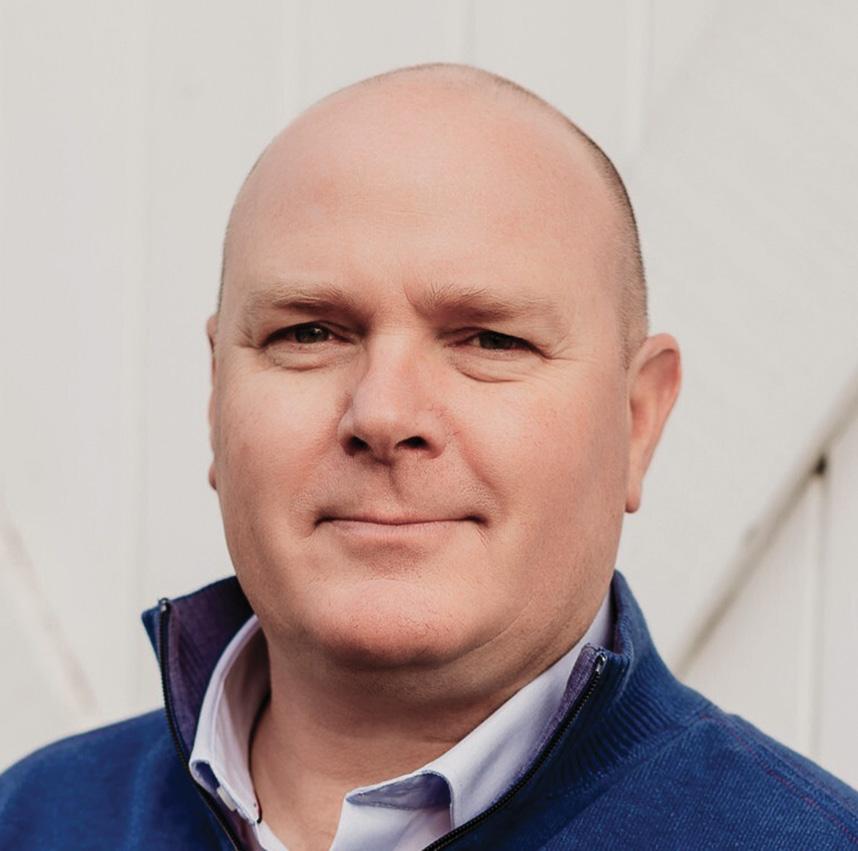
Tip #1: Know Your Numbers
“As anyone in the agriculture business knows, new equipment—even relatively simple and mechanically-based ones—are a significant investment. So, before you make that investment, look very closely at your operation. Dig deep into your numbers. Ask yourself hard questions and be willing to respond with brutally honest answers. Can we afford this investment? What is a conservative estimate of the reduced labor costs and increased productivity? Will we be able to afford the upkeep and repairs? With answers in hand, start researching models and retailers.”
Tip #2: Communicate Changes
“It is very easy for everyone on your team to get excited about a shiny new red or green machine. Teams love big, comfortable combines with cooled seats and automated planting systems. People get less excited about robots arriving to take over tasks.
No one likes to feel like they are being replaced. At Marion Ag, when we began installing automated systems, staff understood they weren’t being replaced, just that physically demanding tasks were being taken off their plates. In fact, these systems didn’t replace any staff; we’ve actually added staff. If you communicate well BEFORE anything goes in, you’ll have a much smoother transition.”
“Since our region’s farm operations are so diverse and we plant and process so many different products in the Valley, it usually makes little sense to replace entire systems. Most will begin automating one piece at a time. If all goes well, automated systems will increase speed, accuracy, and overall productivity. Make sure you are willing to adapt how you work and do business. For instance, not long ago, we introduced an online ordering system for our customers. Doing this meant staff across multiple departments needed to consistently feed our ERP system with accurate, up-to-date information. There was a learning curve at first, but with good communication everyone can adopt new tech without too many headaches and quickly see the benefits.”

Covanta works with companies and communities to find sustainable solutions to their waste management challenges. With a global network of Energy-from-Waste and material processing facilities, Covanta is preserving valuable natural resources and generating clean energy for our client communities and the world we live in.
At Covanta, we ensure that no waste is ever wasted.

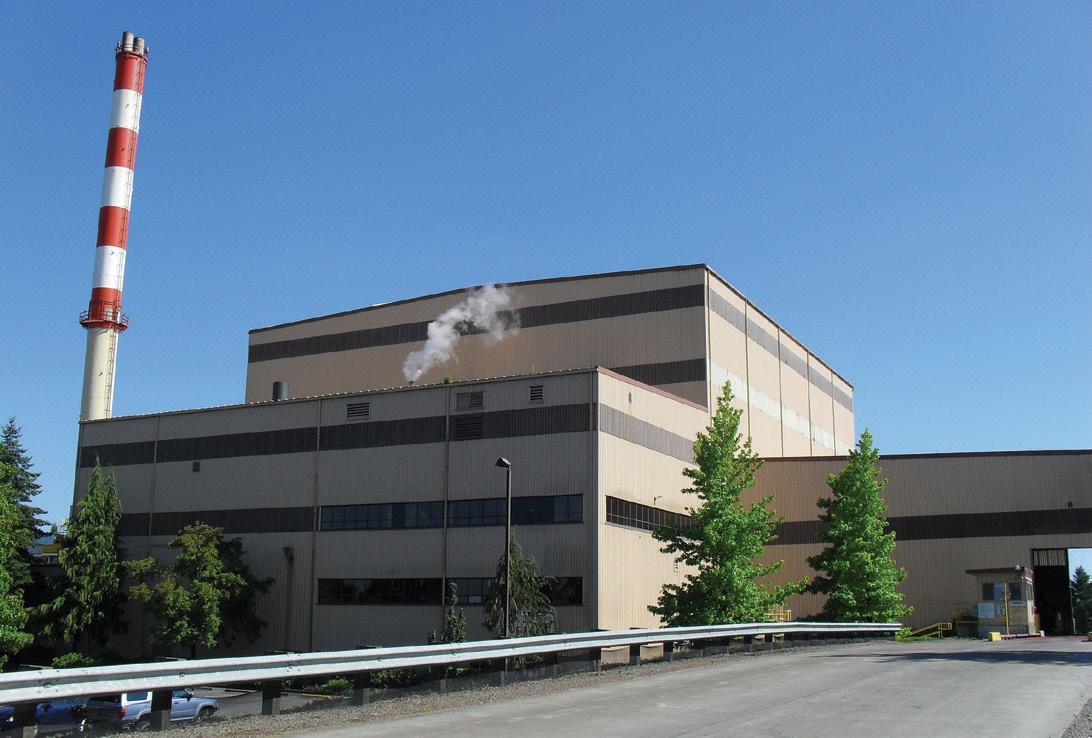
Many readers will remember a time when a man or woman in a truck would deliver milk in glass bottles. No home had a special recycling bin for the glass bottles, they would simply be given back to be washed and reused. Revino wants to give Oregonians a chance to return to this system, starting with wine in the Willamette Valley.
We sat down with Revino co-founders Adam Rack and Keenan O’Hern to share bottle of sparkling wine at Willamette Valley Vineyard’s recently opened Domaine Willamette and learn more about their project and the potential for a circular glass economy.
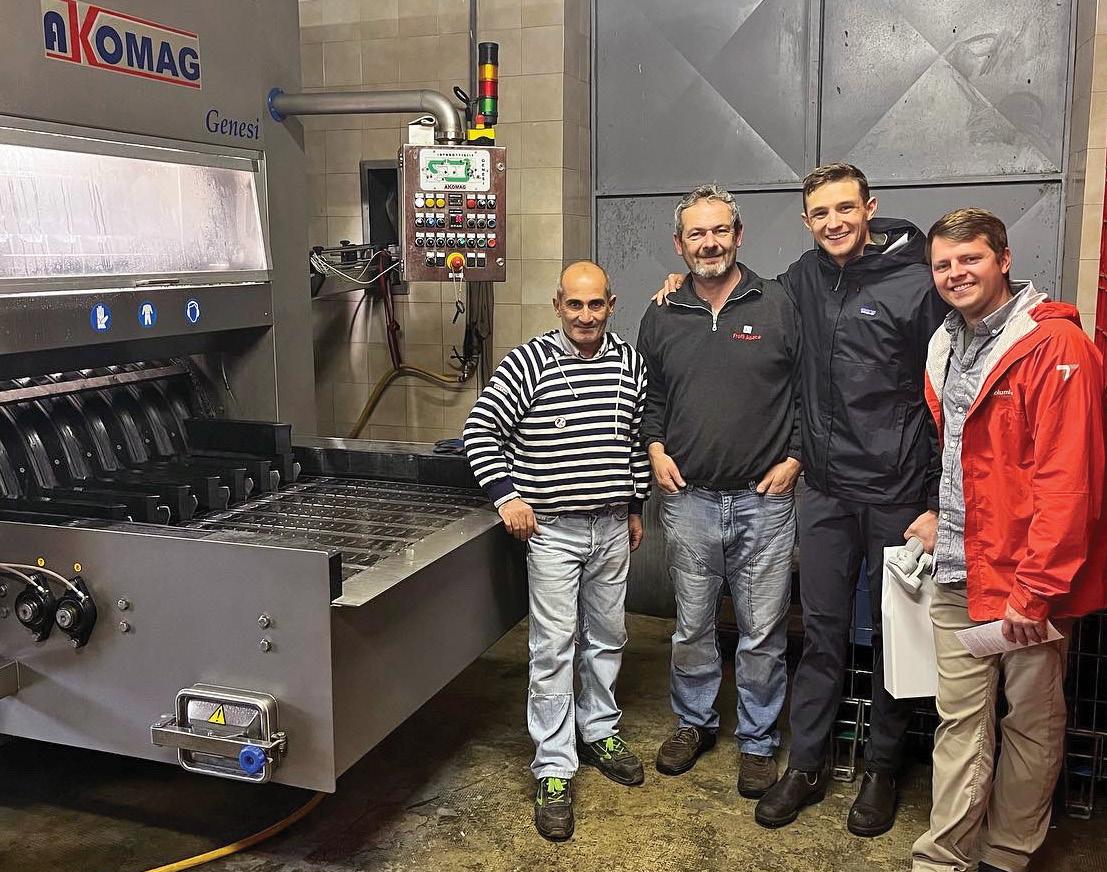
SEDCOR: What was the inspiration for Revino?
Adam Rack: We believe now is the time that we need to secure and localize our glass supply chains in order to make sure that glass that's already produced can stay here and get used again instead of being shipped back or crushed and melted somewhere else.

O’Hern: I grew up in Europe and saw how they had this habitual way of collecting and then bringing back glass bottles and rewashing them. That invigorated me to search for an opportunity or a possible way to do that here in the States, especially in my home of Newberg.
We basically started looking into it and found out that Revino could be the refillable glass option here in the Pacific Northwest.
When we started looking at the bottles that were going to landfills in the United States, we were awestruck at just how many there were. Nationwide, ten million glass bottles go to landfills daily. When you start paring that down state by state it looks a little bit different, but that number is just so huge and so obscure that I don't think people can really fathom what it means. If you lined up those bottles side by side you could cross the entire United States daily.
Those bottles are just sitting there in those landfills. They don't go away.
Rack: Glasses are infinitely reusable. Glass is a product that we take so much precious time thinking about. With our glassware in our wineries, we make sure it's the right one and then we clean it instead of chucking it in the trash and melting it down every single time.
Revino is just the natural next step.
I saw it as well in Europe the first time I was there and that's when I came back and I started thinking, why is this not here? Why does this not exist?
It's just something we've lost over the years. This used to be what we did. We used to refill everything and the practice has slowly gone away. Cans took over. Lightweight glass and one-way distribution markets really changed how things were structured. We think that needs to change now.
SEDCOR: How will bottles be returned and brought back into the glass supply chain?
O'Hern: It comes down to human nature; how do we incentivize people to do something? A lot of times that comes down to some money.
The current deposit system in Oregon was started in the 1970's and has a deposit amount attached to the bottle or can. When you return it, you can get that amount back. We're doing the same thing. Every single one of our bottles will have a fifty-cent deposit on it so there's a higher incentive to return one of our bottles.
I think even more intrinsically to the consumer is a want and need to understand, in a circular economy, where the things they are purchasing are going. What's happening to them and then how do I know when I purchase something that I'm part of
something that's going to be wasted? Instead, they want to do something that has an infinite kind of potential to it.
Rack: Even if someone doesn't really care about the environmental impact, or it's a convenience factor, if they've got three kids and their house is busy and it's absolutely crazy, our partnership with OBRC [Oregon Beverage Recycling Cooperative] allows people to just bring them back to the BottleDrops
where they're already bringing their green bags. Eventually this will expand to other pickup opportunities throughout the State.
The lucky part about living in Oregon is that our beverage producers have this intense direct-toconsumer contact. Wineries get to tell their story so personally. They get to share about everything from the grape to the vineyard to the bottle to the glass and really drive home their sustainability efforts.
SEDCOR: What are the potential economic impacts of your project?
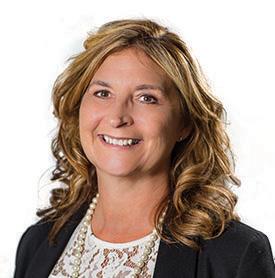




Rack: Think about it this way: we are buying glass this year to use for future years. We can use the glass indefinitely. At least until the glass gets damaged to the point where we can't use it anymore.
We’ll get to use bottles that we're paying for now. We’ll clean the bottles which costs significantly less than buying new glass. We get to leverage today's pricing for glass and then keep using them for years in the future.
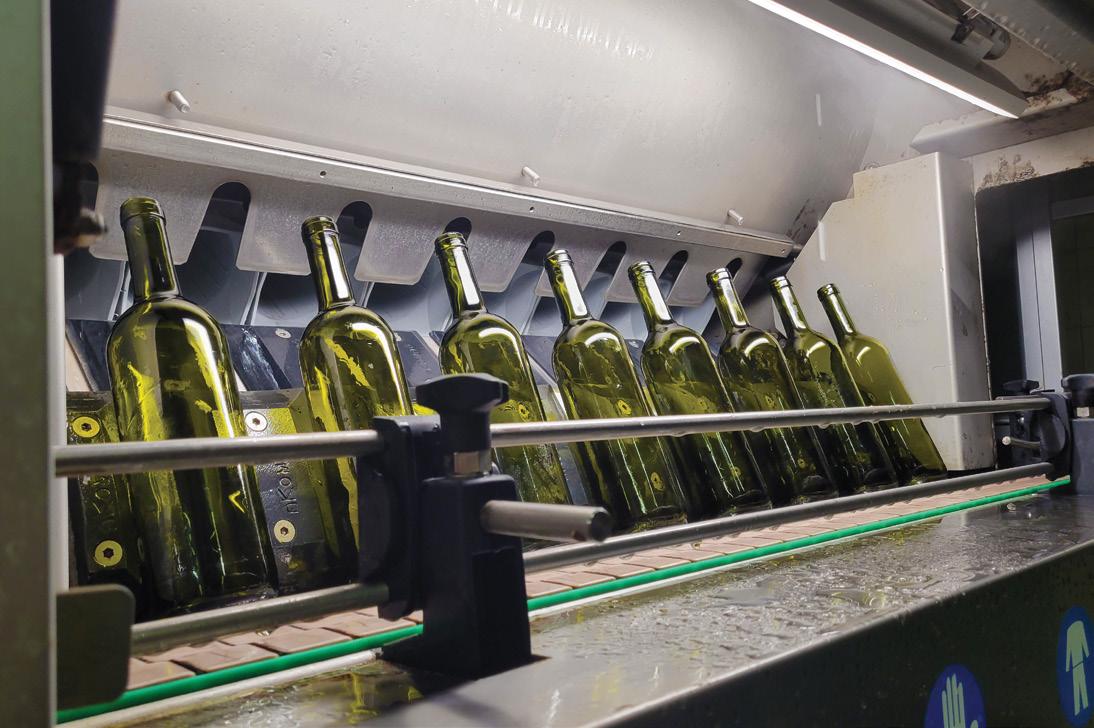
We’re talking to all the bottle producers and they're constantly worried about where their sand supply is. The right type of sand for bottles is running out around the world. There is even sand theft from certain countries. When raw resources are


becoming harder to find, refillables will become more important as glass prices skyrocket.

O’Hern: If we do have that breakage or if we do have a bottle that doesn't meet our criteria, that bottle will go directly to be made into cullet, which is the sand mixture that then can be recycled into new bottles.
The manufacturing facility we work with in Portland does the highest recycling content rate in the country. It's amazing because they're actually using this recycled bottle collet and making new bottles with our returnable embossing that we then get to sell and the whole process continues.
As we think about expanding Revino’s market, it is important to remember that Oregon isn't just a hub for wine. It's also been a hub for microbreweries and more. We were first known for coffee across the country and now there's kombucha that's coming to the market. If you're talking cold brew with coffee or if you're talking kombucha, that's all glass.
We also have a large establishment of new spirits companies coming in and making new types of liquors. You're seeing this new emergence of a lot of different beverage companies. These make up an entire industry that's all using glass. Our machine doesn't inhibit us from just washing one wine bottle. It allows us to be able to switch parts and wash a whole host of different size bottles.
SEDCOR: What is the potential environmental impact of your project?
Rack: Keenan and I were born with the “reduced-reuserecycle" slogan. Reuse comes before recycle and we're missing that entirely right now.
O'Hern: We've all seen the green or blue bins in our schools and in our places of work. How good would it feel to actually understand it at a deeper level. My wife gets so excited when I'm working on this. She says, “I actually feel like I get to know what I'm doing with everything that I'm using and not just washing my plastics and putting them in this bin. But I know.” That's a big feeling for people. They want to know that what they are recycling isn’t just being put into a landfill.
My wife puts it in a good way. She tells people, “My husband is the modern-day milkman for wine.” I don’t think we’re doing something that's new. We're not really toting that we're something innovative. Revino is taking what has been done, what's tried and true, what Europe's doing and has been doing for decades and applying it here in a place that we love and call home. That’s it. Plain and simple.

Running a kitchen takes creativity and innovation, which means using what you have in ways that might not be obvious. And that’s the approach that Energy Trust of Oregon brought to reducing our energy costs. Whatever your tastes, savings are always delicious. Find out more at Energytrust.org/industry - lighting.
Serving customers of Portland General Electric, Pacific Power, NW Natural, Cascade Natural Gas and Avista.


WE STILL MAKE OUR CLASSIC DISHES. BUT OUR NEW FAVORITE RECIPE MIGHT BE ONE FOR SAVING ENERGY.

I wrote an article for this magazine exactly one year ago to muse on the farm of the future (and share my love of science fiction). At the time, I was working at an organization that supported the state’s technology industry. It was all tech, all the time. My career in tech instilled in me the belief that innovation can literally occur anywhere and is not limited to urban centers.
Fast forward one year and I have the opportunity to pen another article for the Enterprise magazine. I am now leading the Oregon Entrepreneurs Network (OEN) after a six month sabbatical where I watched every spinoff of Star Wars and the vast majority of the Marvel movies. This foray into the depths of modern sci-fi actually did influence my decision to accept the role of President and Executive Director of OEN. How on earth? Or, more likely, in space are these two related? The magic of sci-fi in my opinion is the imagination and fantasy of the genre. The creative genius to envision a different world and then bring it to life. I find that very inspiring and I see that same vision and drive in the region’s entrepreneurs. To create a product or a service that currently does not exist with the hope of improving lives or providing more efficient, cost effective ways to work, holds a lot of allure to me. That is why when I thought about my next job, I wanted it to be supporting individuals who dream, innovate and challenge the status quo. I wanted to work with entrepreneurs!
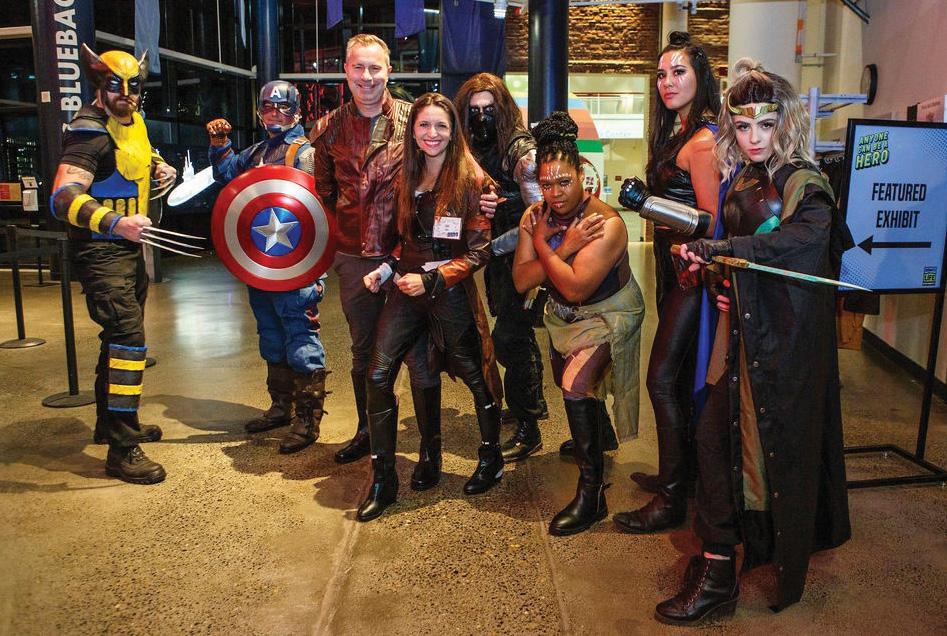
OEN has been supporting the doers, dreamers and innovators who decided to take an entrepreneurial journey for the past 31 years. Through educational series and networking, OEN helps entrepreneurs find the capital - both social and financial - they
need to develop their businesses. The organization does this work out of a strong belief that entrepreneurship offers freedom, empowerment and autonomy while building community, connectivity and interdependence. Oh, and OEN empowers entrepreneurs across industry sectors which means we work with tech and also life sciences, manufacturing, food and beverage innovators and more.
All this can be distilled down to the simple work of connecting entrepreneurs to the resources they need to succeed. Whether that is an introduction to an investor, a referral to a banker to explain financing options or sharing a grant application that supports companies exploring the decarbonization of agriculture. OEN also celebrates the success of the region’s entrepreneurs annually and just last month recognized McMinnville based HelloCare as a winner for their innovative approach to long term care and caregivers.
One of the signature events hosted by OEN every year is an angel investing food and beverage event called Oregon Angel Food. The event incorporates a marketplace and for the first time ever will take place in the Mid-Willamette Valley in September 2023. Not only is this a chance to highlight the best and brightest food innovators but it sheds light on the farmers, manufacturers and distributors that make Oregon a food destination. I cannot wait to showcase the interconnectedness of the Mid-Willamette Valley’s supply chain that enables innovation!
My goal as we move forward is to focus on accessibility and inclusivity of the OEN network which is the most important word in our name. Whether you use “network “as a noun of interconnected people or a verb to interact with others to exchange information and make professional connections, OEN will be the network that is accessible, equitable and supportive of every entrepreneurial journey. It is time to explore the limitless possibilities of entrepreneurship throughout Oregon. Or in the immortal words of Buzz Lightyear, “to infinity and beyond!”

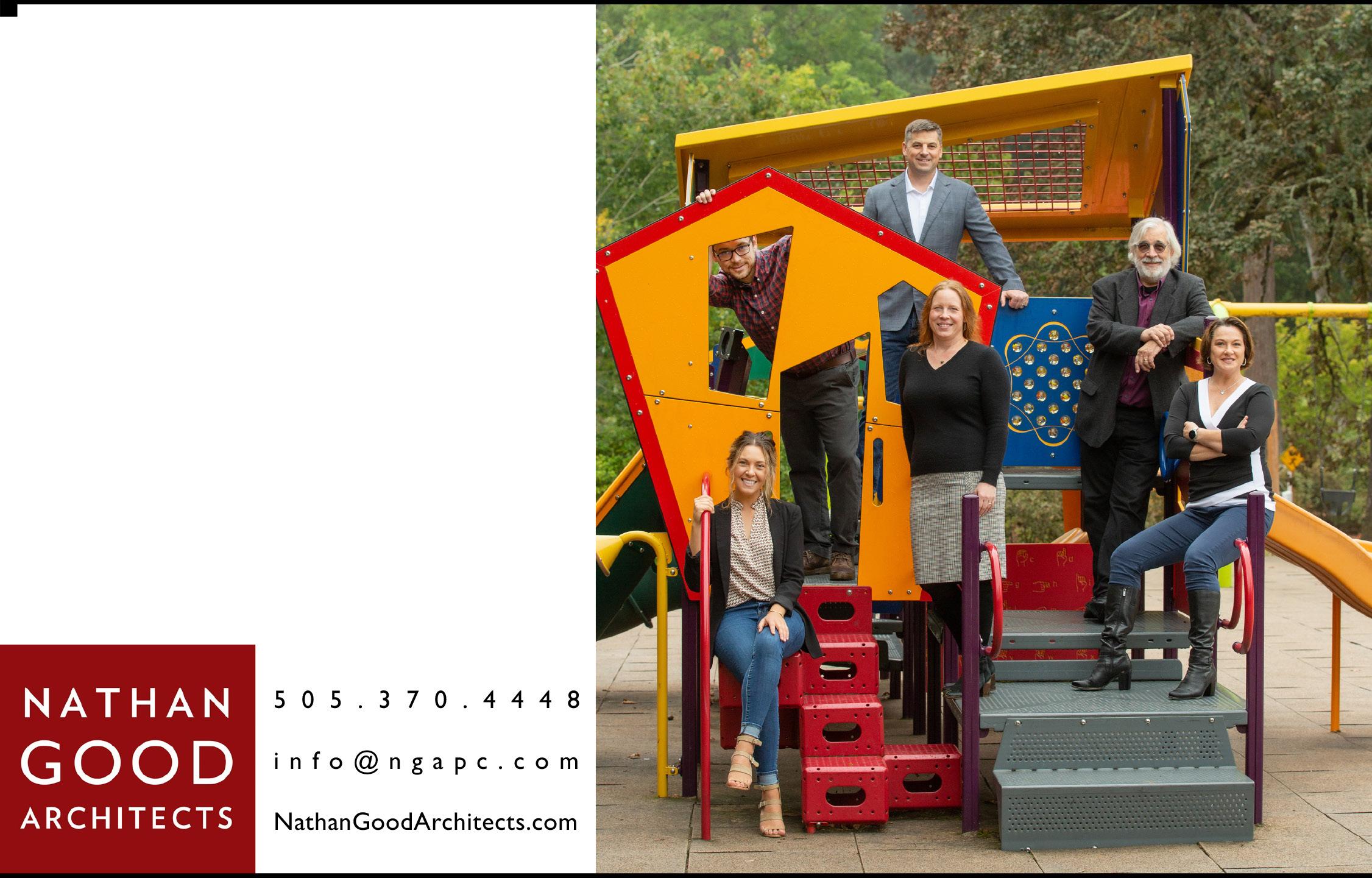


















Alvin Elbert is a long-time WWP board member who is an inspiration to this organization, his employees, his colleagues, and the community. Alvin has owned A.R.E. Manufacturing, Inc. in Newberg since 1980 and has been dedicated to training and employing youth from the beginning. He is the winner of many awards for his business acumen and community focus.
His dedication springs from a negative experience in his first job. He was a self-described shy, recent high school graduate hired by a machine shop. According to Alvin, he was “fired in the first 30 minutes on the job.” He said he had no training, no coaching, and no support. This experience did not deter him. In fact, he went on to graduate from the Oregon Institute of Technology with a degree in Industrial Machining, and from there founded A.R.E. The rest is history.
Today, A.R.E employs 45 people including 14 full-time and parttime youth between the ages of 16 and 21. A.R.E’s full-time trainer works intensively with these youth and, while they learn how to work the machines, the emphasis is on learning how to follow A.R.E’s process. They work in cells of three to four employees and, in addition to the instruction received from the trainer, Alvin states, “A.R.E.’s quality manager keeps an eye on them.”
Alvin is committed to employing these youth until they graduate from college unless they decide to have a career in machining, in which case, he hires them for the long term. In 2008, Alvin realized the pool of experienced machinists was limited and A.R.E. needed a new approach to finding talent. This prompted a shift to hiring and training entry-level positions – in other words, they grew their own. For a time, Alvin says they worked with the community college, but he believes introducing “college-age
youth to manufacturing is too late…youth need to be introduced sooner.”

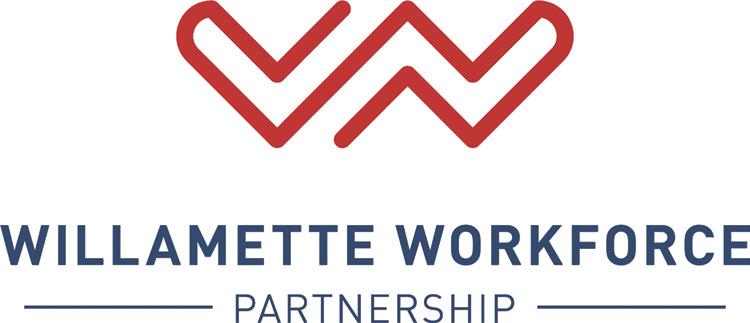


Following his belief that exposing youth to machining and manufacturing while in high school, Alvin and A.R.E. have worked with Newberg High School (NHS) for many years. In fact, 36 years ago, A.R.E. recruited its first summer intern from the NHS Machine Shop program. That employee still works at A.R.E. and is now the shop foreman.

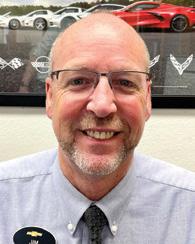
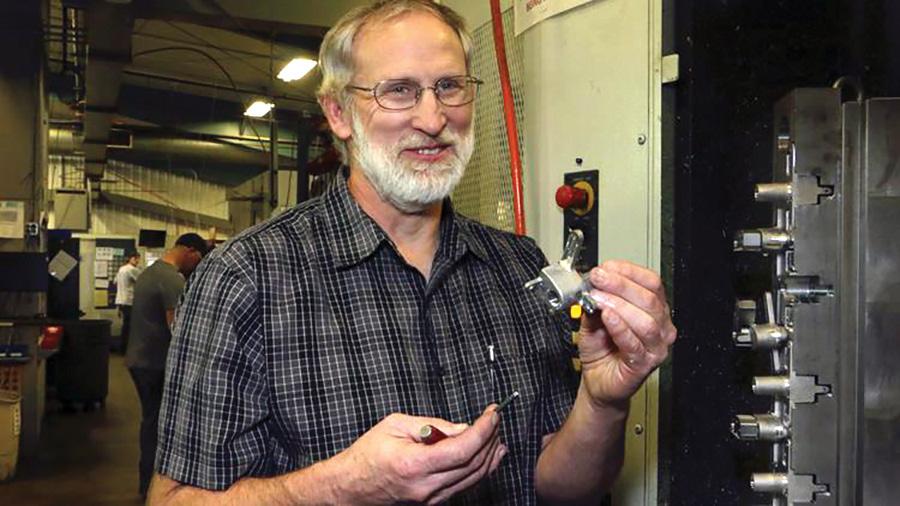
Five years ago, Alvin founded Tiger Manufacturing in collaboration with NHS. Tiger Manufacturing is a student-run machine shop, fully functioning at Newberg High School. The students machine real parts, for real customers for real paychecks. Students are educated while they efficiently and effectively manufacture high-quality machined components.
Tiger Manufacturing provides a unique, hands-on educational experience that prepares students for life after high school. It is student-driven from the ground up. Students receive customer orders, procure tools and material, manufacture parts, send invoices, and report payroll, among other tasks. Students receive both class credit and payment at minimum wage for work completed.
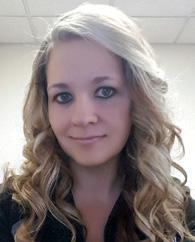

Alvin has volunteered countless hours and donated vital manufacturing equipment to Tiger Manufacturing. He is particularly excited that “students have an opportunity to experience a real job, in a real machine shop.” Something that was not available to him when he was in high school.
Join WWP in congratulating Alvin for his dedication to training and employing youth!






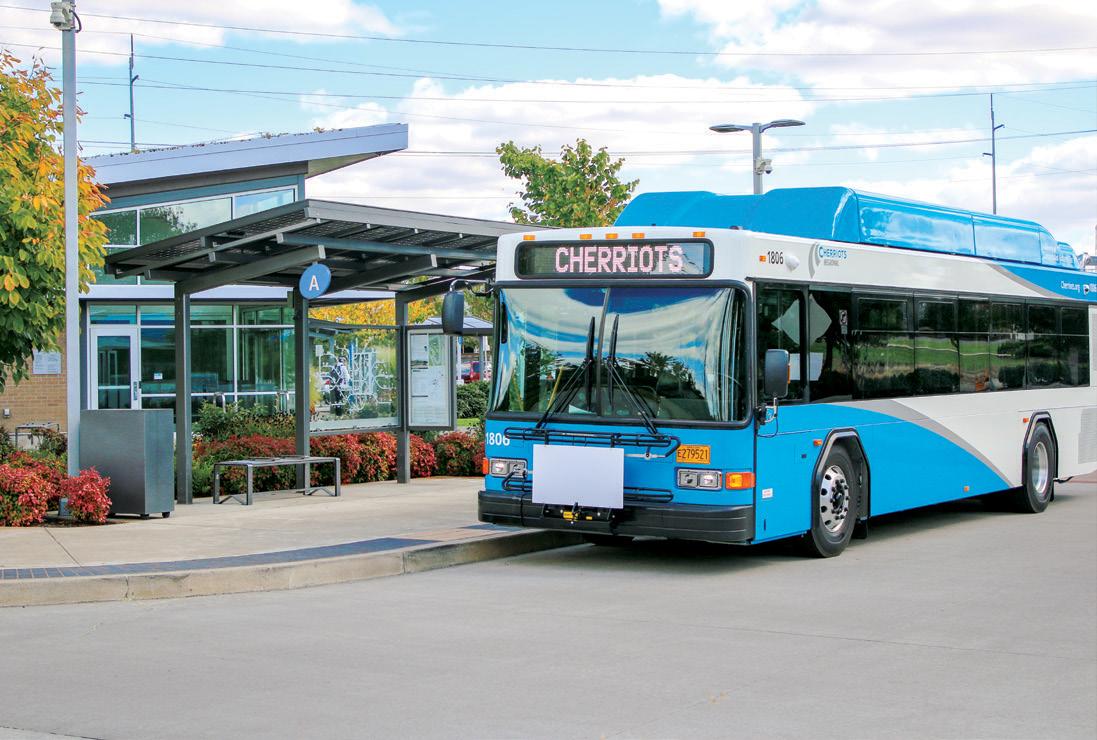
 by Commissioner Lindsay Berschauer
by Commissioner Lindsay Berschauer
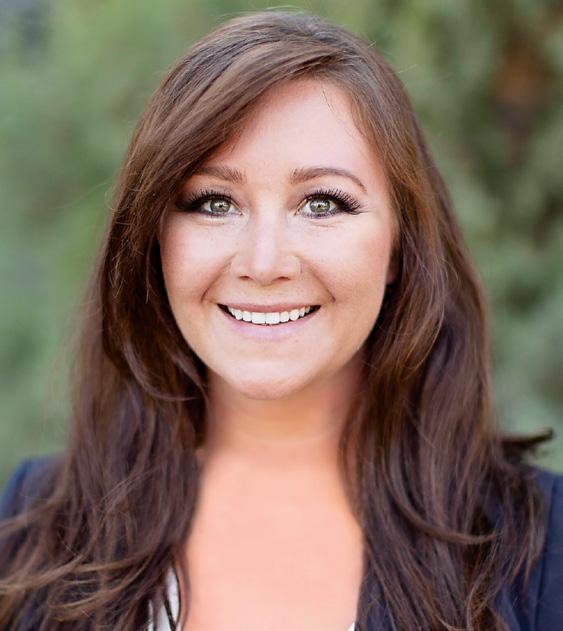
As we near the end of 2022 and look forward to a new year, we are hopeful about Oregon’s economy and Yamhill County’s ability to weather a predicted recession. State tax revenue is at a record high level with an anticipated 2023 kicker of $3.7 Billion. While this is a sign of strong economic output, state economists have repeatedly warned of a recession in Q2 or Q3 of the coming year with inflation, increasing interest rates and a housing squeeze threatening a slowdown.
Yamhill County’s predominantly agricultural base is well poised for changing markets and has adapted quite well over the past three years of COVID shutdowns, supply chain challenges and labor shortages. Our employers are agile, creative and resilient and we remain ready to assist with changing needs.
Yamhill County recently awarded $453,000 in grants for supply chain innovation to three companies: Revino Inc., Northwest Linen Association, and Chapul LLC. Revino has committed to reducing strain on local supply chain issues by collecting, cleaning and reusing wine bottles for local wineries. Providing this service will lower costs, ensure ongoing supply and reduce the overall carbon footprint for one of our largest industries. Northwest Linen Association seeks to bring flax fiber back to Yamhill County in an effort to produce, once again, products like high-end linen clothing. Yamhill County historically produced flax fiber from the 1930’s-1950’s to supply the US Military with clothing and equip them for war. This grant will help farmers with seed planting and training to bring this commodity crop back to the county. Chapul LLC will increase local supply of animal feed and soil fertilizer products, which are predominantly imported from China and Canada. We look forward to seeing how these companies innovate and improve supply chain localization.
We are also partnering with innovative childcare initiatives like Project Oasis to connect industry to non-profits and childcare providers to solve workforce needs. Yamhill County is currently undergoing a needs-analysis and we predict the results will show a



significant lack of access to childcare with a subsequent negative impact on our workforce. Investments in efforts like Project Oasis seek to facilitate and speed up creation of new childcare facilities, reduce local red tape requirements and identify how the State can better assist with these needs. Project Oasis’ model has been so effective in Yamhill County that other counties and municipalities are looking to this model as the future of childcare expansion.
Many counties have already adopted rural industrial and business development tax incentive programs as authorized by the State, and Yamhill County is beginning to assess how those programs could help facilitate industry expansion and investment. We look forward to more robust conversations with our core industries as to how the county can help with growth in an ever-changing regulatory, tax and inflationary environment.
As we look ahead to this coming year, we will add Commissioner-Elect Kit Johnston to our Board in January. Kit’s robust experience in the private sector and cross-industry business ownership make him a tremendous asset to our focus on economic expansion. Not only is Kit well-versed in real estate and land use practices, his background as a farmer will ensure that our agricultural community has a strong voice. I look forward to hearing his fresh perspective and ideas of how we can strengthen Yamhill County’s communities.
Yamhill County has been able to weather economic downturns before due to limited government policies and fiscal restraint. Having commissioners rooted in the private sector is a benefit when tackling future challenges that may come with a recession. The accompanying labor market shift has forced us all to rethink how we best prepare for the future. With open minds, we remain ready to partner with industry leaders in the coming year.



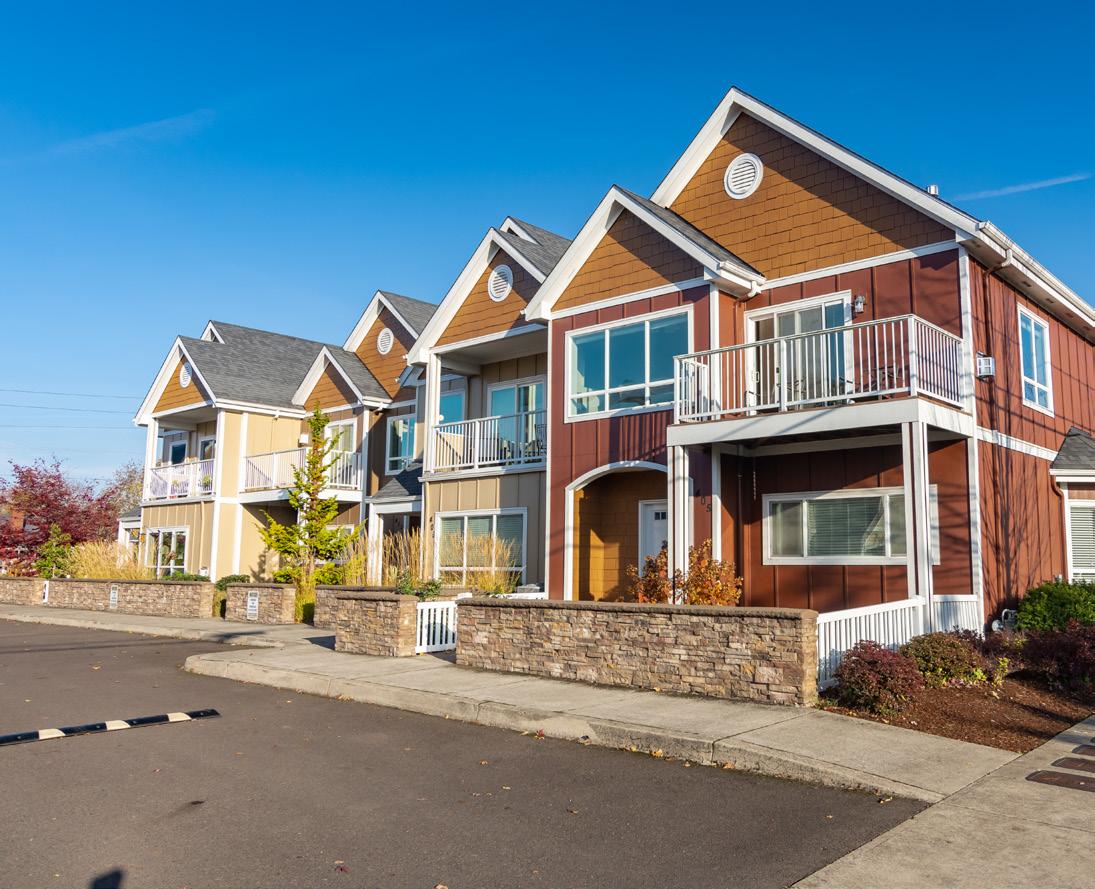



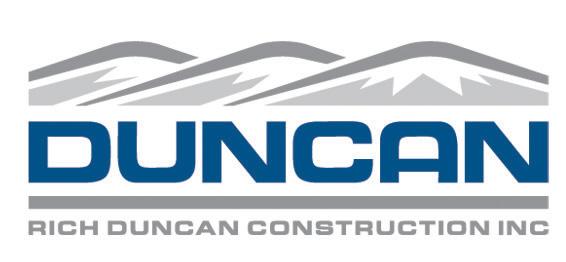 Kevin Cameron, Marion County Commissioner
Kevin Cameron, Marion County Commissioner
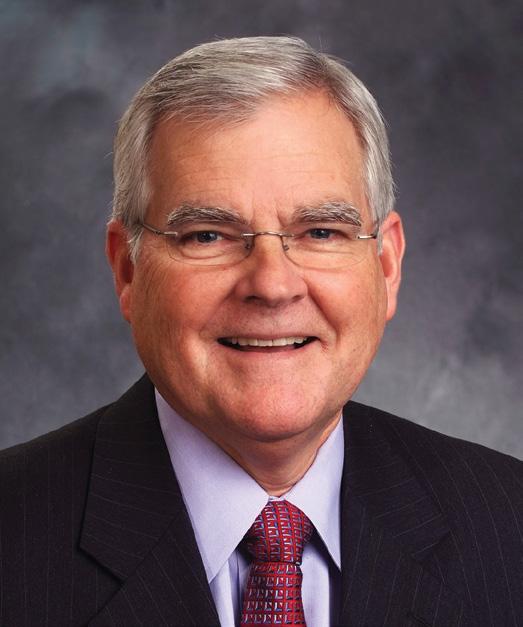
Marion County has come a long way with technological and economic innovation in recent decades, in large part thanks to organizations like SEDCOR that continue to champion regional economic growth. As a former legislator and now one of your three Marion County commissioners, I have had the wonderful privilege to observe and participate in many of these advancements firsthand. It has only made me prouder to be a part of this incredible community we all call home and confident in our trajectory for growth in the decades to come.
One of the major drivers of economic innovation that cannot be overlooked is education, but more specifically technical education and trade schools. The Willamette Valley has tremendous opportunities like this for teens looking to find their path into a family-wage job. I was so impressed recently on a tour of the Willamette Career Academy, a new career and technical education center that has multiple opportunities for high school students, including programs in diesel mechanics, health care, manufacturing, and many others. With the large agricultural economy in Marion County, technical jobs that support our farm infrastructure are invaluable, making these programs important while also setting up our teens for success in high-paying technical jobs in their own community.
An area of policy that we as commissioners have personally championed was working with the Oregon Legislature to make a tax credit available to existing businesses that allows them to invest in new equipment or facilities without having it impact their property taxes for the next three years. This credit encourages local businesses to invest in growth and limits tax burdens on new infrastructure for the first few years. This in turn provides more jobs locally for
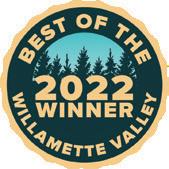

our community, encouraging residents to stay and work here, rather than have to seek employment opportunities elsewhere. SEDCOR has done a tremendous job promoting and sharing this tax credit resource with local businesses, and I’m proud of what we’ve been able to accomplish together.

As we look to the future in Marion County, I believe the way to support innovation and continued success will be through infrastructure that supports technological growth. With the increased use of sensors, computers, and artificial intelligence (AI) in manufacturing, in farming facilities, and elsewhere, supporting the more rural areas of our county with broadband infrastructure has become increasingly important. And with the boom in flexible work locations, expanding broadband will support individuals in rural areas who work remotely in internet-based jobs. Supporting septic, sewer, and road infrastructure in these rural communities is equally important as remote workers gravitate to smaller communities. We need to plan for population and job growth not just in larger cities, but in the entirety of the county, and plan infrastructure accordingly, and as your Board of Commissioners, we are already doing this.
Marion County has always been proud to work with SEDCOR, providing funding for their organization through lottery dollars. We have the shared vision of wanting to see Marion County residents thrive and to grow local opportunities that attract new talent. Supporting innovation in existing businesses will provide growth opportunities for us all. Marion County is the best place to call home, and I’m thankful to have the opportunity to serve in this community for years to come.
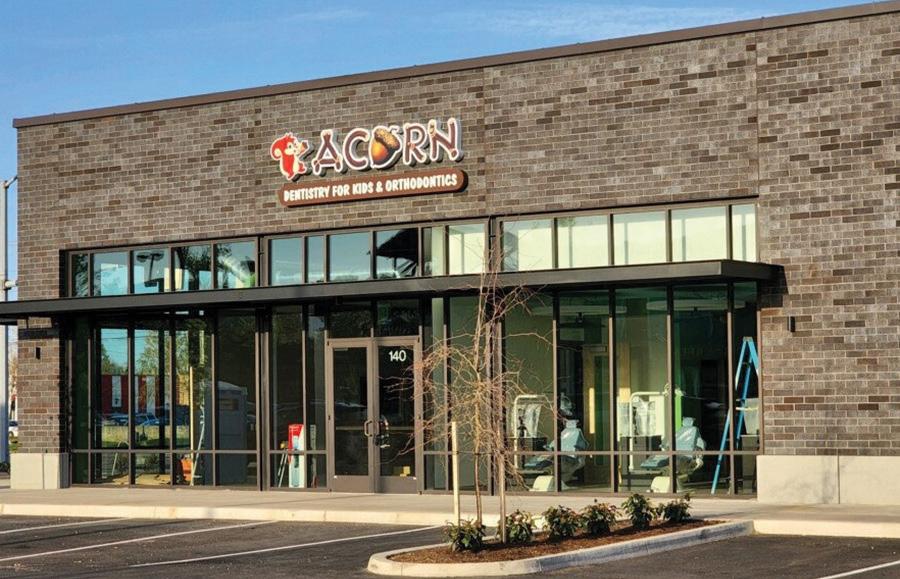
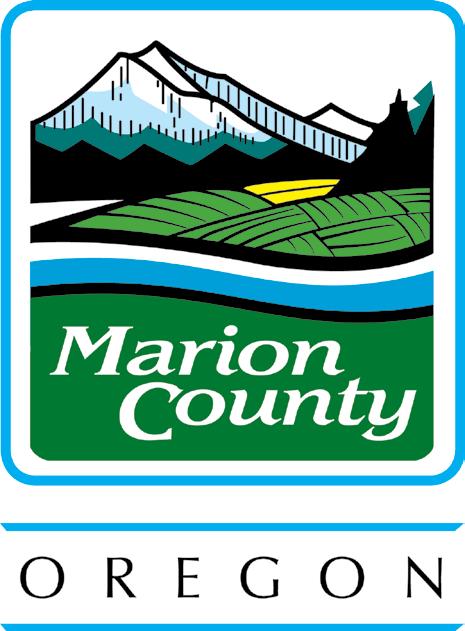
You may already know us as a trusted partner for all your personal financial needs. But your credit union membership is also an important business tool, because with it you can take advantage of all the benefits, products and services available to our business members.

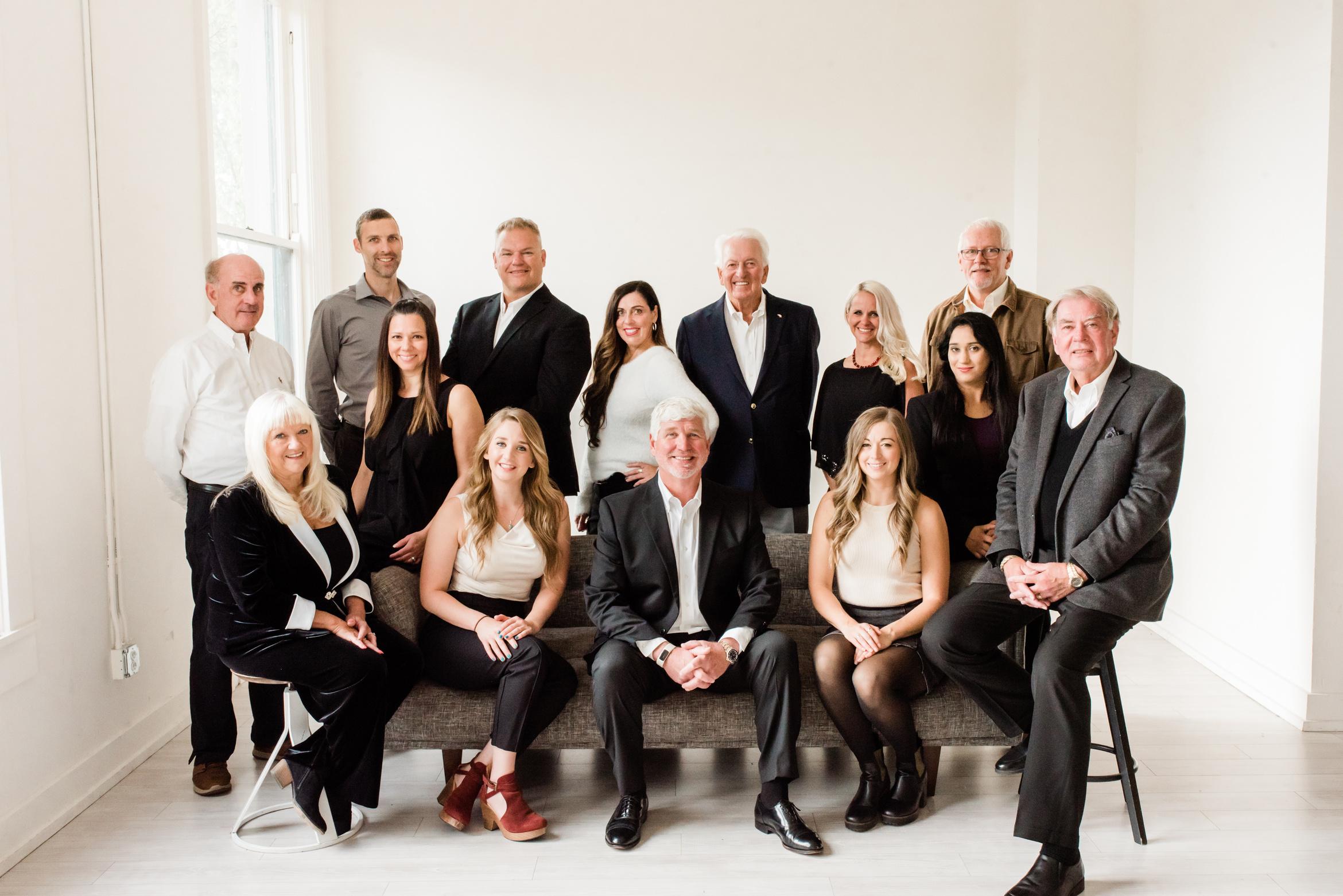
• Business solutions to help you achieve financial success
• Cash management tools to create efficiencies and convenience
• Deposit accounts to fit your unique business needs

• Loan products and services to help you grow and manage your business



Financial education for members Oregon State Credit Union provides financial education to our members and the community. To learn more about the financial education we can offer your employees, call us at 800-732-0173.

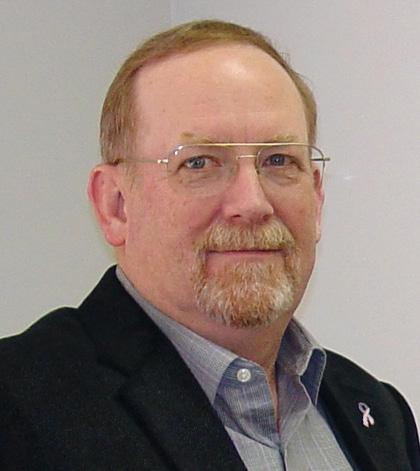
As I have commented in prior issues of this publication, I feel I am blessed to live in an era and place that engages in amazing innovation. I have spent my adult life in pursuit of technology and innovation in agriculture and the manufacturing sectors, and have spent the past 12 years as a County Commissioner supporting the policy and funding realm for many of the efforts that bring innovative solutions to market.
As an example of current technology under research that will benefit Polk County and the world is the addition of an Agrivoltaics project at the Oregon State University research center in Aurora. The center is the North Willamette Research and Extension Center (NWREC) and is partnered with Oregon Clean Power Cooperative to build and operate a 6 acre solar panel site that will integrate a wide range of crops under the panels for research.
From the Oregon Clean Power website: “It turns out that combining solar panels and growing crops in the same field, or Agrivoltaics, may actually benefit both. The cooling effect of growing plants means solar panels generate more electricity and last longer. And the higher soil moisture levels and cooler temperatures under solar panels mean less water is needed for irrigation, healthier, less stressed animals and plants.

Most plants don’t actually need all the sunshine that’s available to them to grow well. Researchers have successfully grown aloe vera, tomatoes, corn and lettuce in the intermittent shade cast by PV panels. Some varieties of lettuce even produce greater yields under PV panels than in full sunlight.
Lettuce alone could justify a national project in agrivoltaics. In 2012, U.S. farmers grew lettuce on 267,100 acres. PV panels on that land could generate 77 GW of electricity, more than the total U.S. installed capacity (60 GW) of PV power in 2018. Research by Prof. Chad Higgins, Solar Harvest Principal Investigator, shows that converting just 1% of the world’s agricultural land to agrivoltaics would offset global energy demand.”
Professor Higgins approached Polk County early in his search for ag lands that he could acquire under a research grant. The Polk County government team was not able to direct him to a successful outcome for a Polk County home but I had the honor as an Advisory Committee member to the NWREC Director to play a role in getting this project to that facility. I believe this site was the best choice for OSU and for the research that stakeholders across the country will benefit from. In terms of response to climate change, clean energy and vertical integration of crops and animal production, this type of innovation is an example of the exciting opportunities Polk County has been a party to.
The Polk County Commissioners are regularly engaging with community partners and businesses to assist in the support of new technology or location of facilities that will create jobs for local residents. As an example of these new facilities in Polk County is Ascentec Engineering LLC, a manufacturer of precision machined parts and assemblies for the semiconductor and aerospace industries, opening its new location in Dallas.
The 131,000 square foot facility formerly home to Praegitzer/Tyco, is undergoing a multi-million dollar renovation and facility set-up that will take two to three years to fully complete. Ascentec plans to have 100 people in full-time employment by the end of 2022 and more in 2023. The site is being transformed into a state-of-the-art modern CNC manufacturing environment with a focus on automation and robotic manufacturing. In evaluating new locations to expand, Ascentec Engineering chose the Dallas location due to its proximity with their current headquarters in Tualatin in addition to local universities and community colleges’ CNC technical centers.
The Polk County Commissioners are confidently expecting this type of innovation and growth to be the positive trend for the next decade and beyond. We see these business and technology advances as the new ladders to employment and regional vitality that will add strength to an existing natural resource economy that has suffered for decades in Polk County.
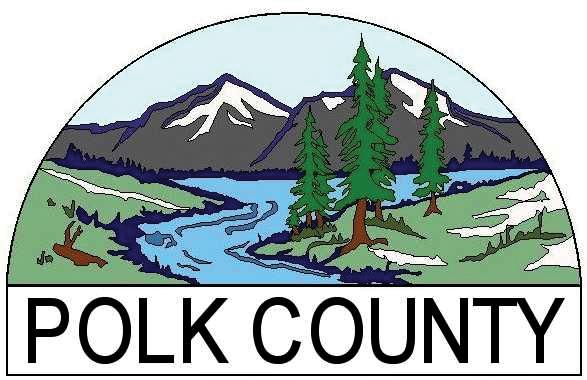
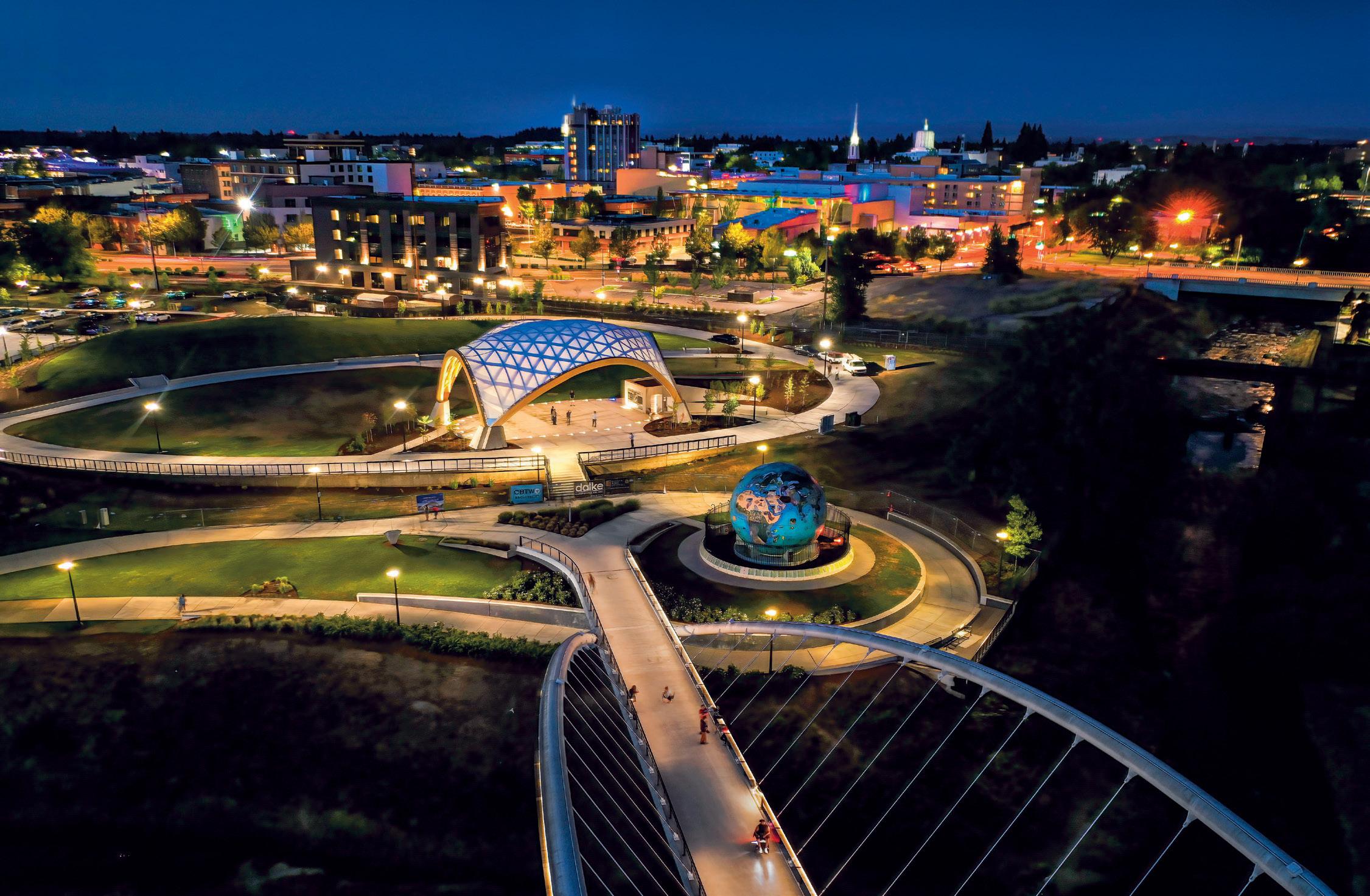

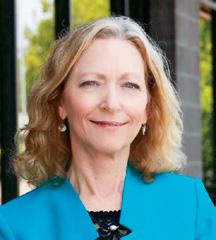
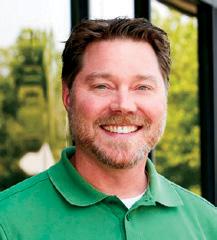



Vineyard’s newest venture, is Oregon’s first and only winery and tasting room devoted especially to sparkling wine.
“This has been a 41-year dream in the making,” says Jim Bernau, owner of Willamette Valley Wines of his newest venture, Domaine Willamette. “And now, it is finally a reality.”

Domaine Willamette stands like a naturalistic beacon on a hillside just off Highway 99 in Dundee, Oregon. They are one of only a handful of biodynamic vineyards in the region and Oregon’s first facility built exclusively for sparkling wine.
In an industry where tradition is so highly valued, it can be difficult to do things differently. Domaine Willamette stands out by leaning into tradition and relying heavily on the power of nature and our region’s unique environmental advantages.
Certain climates are best for growing the grapes needed to make their particular product. In turn, parts of the world like Champagne in France have become famous for their particular take on sparkling wine. But, according to Bernau, “The northwest’s growing conditions are perfect for developing rich flavors at lower sugar levels. And this is exactly what we want for sparkling wine.”
Domaine Willamette’s sparkling wines are fermented underground, just below the spacious tasting room using what is known as the method traditionalle, where, according to Wine Spectator, “Wine undergoes a secondary fermentation inside the bottle, creating bubbles. The process begins with the addition of a liqueur de tirage (a wine solution of sugar and yeast) to a bottle of still base wine, triggering a secondary fermentation inside the bottles.” Wine and sugar are then added, giving the sparkling wine its distinct sweetness. This method does require extra steps and more work. But, for the team at Domaine Willamette, the light, perfectly sweet,
easy-to-drink final product makes the extra work more than justifiable. All the additional time and attention culminates into a unique experience—on a clear afternoon, groups of loved ones sip and laugh as they relax on the multi-level patio which opens to wide views of the valley just over one of the region’s only biodynamic vineyards.
A biodynamic farm is designed to be a single organism, a self-sustaining system utilizing composting, water recycling, and eliminating the use of chemicals and pesticides. This process creates a high-quality wine with a low environmental impact.
Vision Wine, like almost all the food products produced from the region’s value-add crops, tells a story. How it is grown, harvested, transformed, and enjoyed expresses the values held by the people in each part of the process.
Domaine Willamette wants to tell a story about the future of Oregon wine, to express the possibilities for world-class wine created through innovative techniques. Every element of the space seems to be designed to celebrate the region—even the roofing.
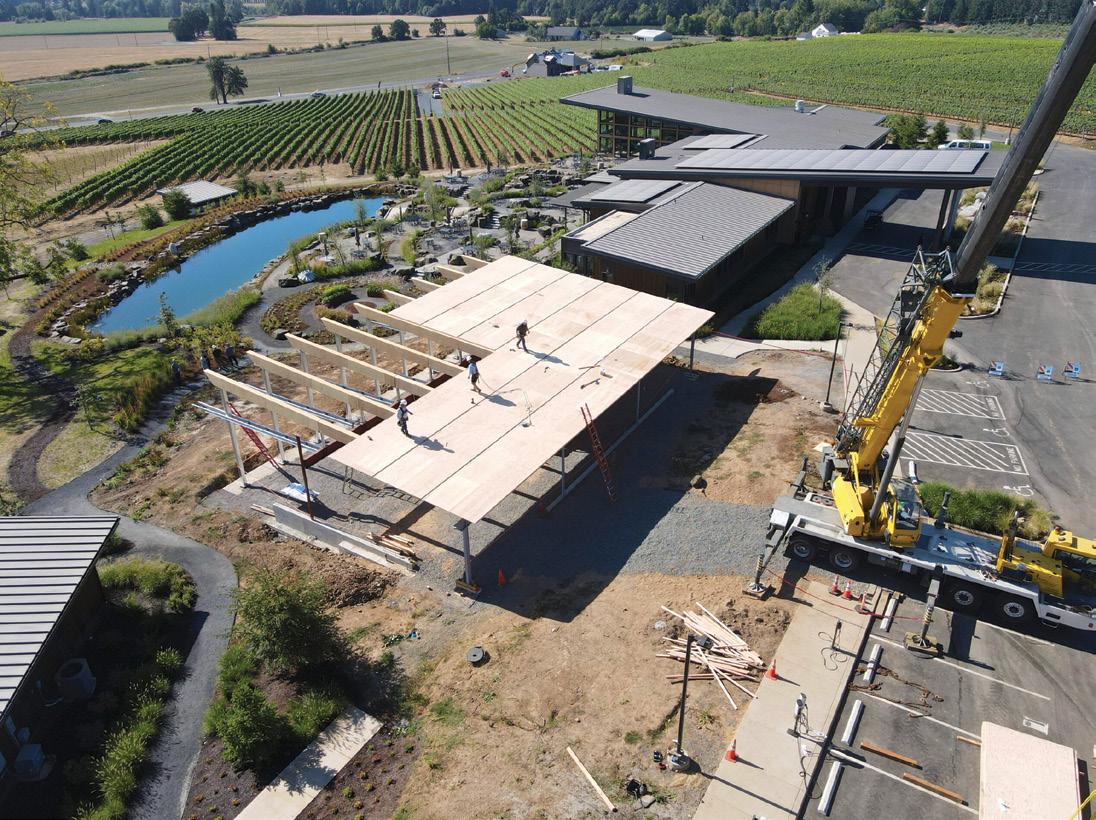
Just off the main building stands the outdoor pavilion, capped with clean simplicity by Mass Plywood Panels, an exciting new building material manufactured and installed by Freres Engineered Wood in Lyons, Oregon. “Wine enthusiasts are interested in what the wine industry is doing to support humanity,” says Jim Bernau. “That’s why stewardship of the land has been a foundational value for us since the winery started in 1983 and why we consider sustainability in the choice of building materials we are using to create Domaine Willamette.”
Domaine Willamette is now open to the public. Enjoy the tasting room, food pairing, and in-depth 90-minute tours of the entire facility, including the state-of-the-art underground fermentation cellar. Learn more at wvv.com/Domaine-Willamette.
John Mead knows concrete. He’s worked with it for years to build his high-end fire tables under the brand of Vesuvian Forge. The positive qualities are obvious: strength, beauty, versatility. But John Mead and his team at Solid Carbon understand something else about concrete: it is a major contributor to global carbon emissions.

“The world uses so much concrete,” says Mead from his McMinnville, Oregon office. “The magnitude is hard to express.
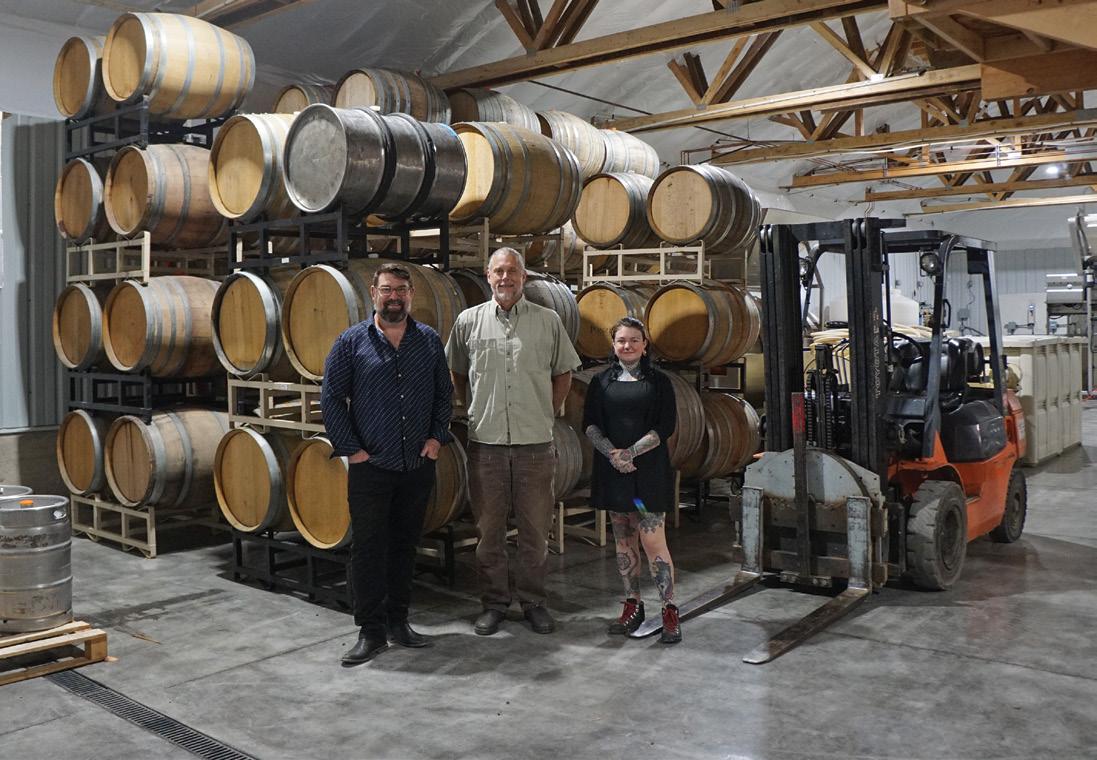

As a visual, every single day enough concrete is poured to cover the city of Seattle in over four inches.” Couched in economic terms, if the worldwide concrete industry were a nation, it would have the 35th largest GDP, just ahead of Singapore.
Civic, commercial, and residential builders use concrete in their projects for the same reason Vesuvian Forge uses it in their tables. It can be cast to take almost any shape. Once it is set and cured, it only increases in strength and durability. And it is
relatively cheap and easy to manufacture. But these practical benefits come with environmental costs.
The production of cement, one of the primary ingredients of concrete, alone is responsible for 7% of the world’s carbon emissions. In order to make it, limestone must be heated in a kiln set to 2600 degrees Fahrenheit using fossil fuels like coal and natural gas. And that 7% does not even include the environmental impact of mining the limestone, quarrying rock for gravel, and transporting ready-to-mix concrete to jobsites.
According to Mead, “For every pound of concrete produced, a pound of CO2 is put into the atmosphere.”
When looking at these statistics, many see only a big problem. Solid Carbon sees a massive opportunity to radically reduce global carbon emissions by creating the world’s first commercially viable carbon-neutral concrete mixture.
Mead began dabbling with the idea of a carbon-neutral concrete mixture in September of 2021. “There has been so much advancement taking place for major contributors to carbon emissions,” says Mead. “This would be things like electric transport and renewable energy sources. But very little has been done to change the makeup of concrete itself.” This is where Mead and the team at Solid Carbon put their focus.
Solid Carbon’s primary goal became to eliminate carbon from the carbon cycle. To give a Schoolhouse Rock explanation of this process, carbon is emitted by natural and manmade processes into the atmosphere; plants like trees take that carbon and convert it to use for energy; in the case of a tree, the carbon is returned to the atmosphere when the tree falls or is cut down and decomposes.
So, what will stop carbon from decomposing and returning the carbon to the atmosphere? The answer: biochar.
“Biochar is one of the most effective tools for carbon sequestration in the world,” says Mead. “By baking wood material such as chips and scrap limbs instead of burning them, the carbon in those materials stabilizes and will not decompose and reenter the carbon cycle.” Solid Carbon found a way to add biochar to a precise concrete mixture, thus cancelling out the carbon created in the concrete production process.
Solid Carbon has already begun to use their patented formula in what Mead describes as “low-risk” applications like production floors, sidewalks, and home foundations. The team has overcome the first major obstacle by cracking the code on carbon-neutral concrete. The next challenge will be to break into the massive and risk-averse concrete industry.

According to Mead, some researchers had been trying to create similar solutions, but few have taken off because they were entirely unmarketable. “I’ve spent many years building businesses. As progressive as I am in some areas, I believe in the free market and understand the importance of meeting a market
need and adding value to an industry at a price people are willing to pay.”
In order for Solid Carbon’s carbon-neutral formula to be widely adopted, they will need to overcome two hurdles: price and risk.
“I believe we are very close to hitting the right price,” says Mead. “Builders and financers of projects already value green buildings and are willing to add some costs in return for a nice plaque or just the good feeling of helping the planet. Yes, our solution will add some costs, but nothing to cause someone in the budget office to lose sleep over.”
Overcoming the fear of risk will take more time. Even though Solid Carbon concrete has already shown to be just as durable as traditional concrete, it will take absolute certainty for it to be used in a bridge or apartment complex. “When so much capital and liability is on the line, few people want to be the first to try something new,” says Mead. “Lawyers love it; builders and investors do not.”
Mead says for Solid Carbon to have mass adoption, his product cannot merely be good. Mead says, “It has to be bullet-proof.”
To reach “bullet-proof” status, Solid Carbon is continuing to pour, fine-tune their mixture, and work with local researchers. The road to mass adoption may be a slow, painstaking crawl, but as Mead and his team sees it, the upside is huge.
Like covering-Seattle-in-four-inches-every-single-day huge.
